Compositions and Methods Related to Nucleic Acid Synthesis
Chen; Michael C. ; et al.
U.S. patent application number 17/554012 was filed with the patent office on 2022-04-14 for compositions and methods related to nucleic acid synthesis. This patent application is currently assigned to Nuclera Nucleics Ltd.. The applicant listed for this patent is Nuclera Nucleics Ltd.. Invention is credited to Michael C. Chen, Jiahao Huang, Radu A. Lazar, Gordon R. McInroy.
| Application Number | 20220112534 17/554012 |
| Document ID | / |
| Family ID | |
| Filed Date | 2022-04-14 |


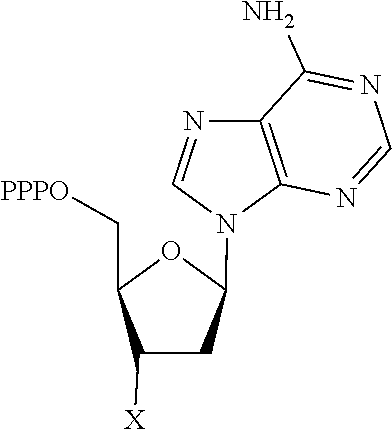
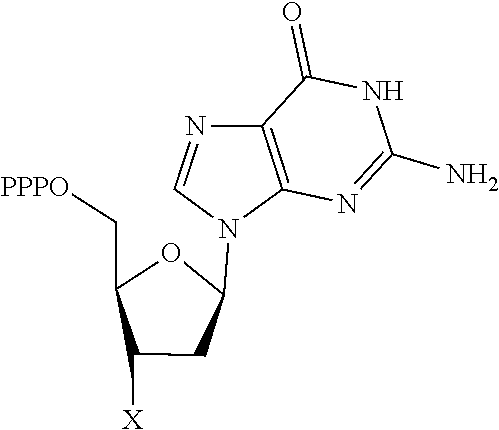
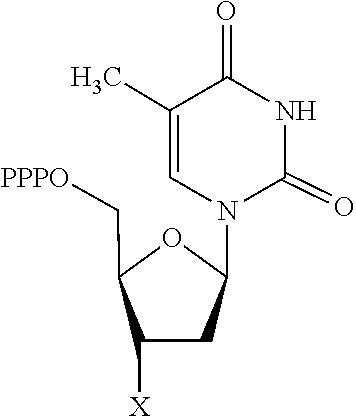
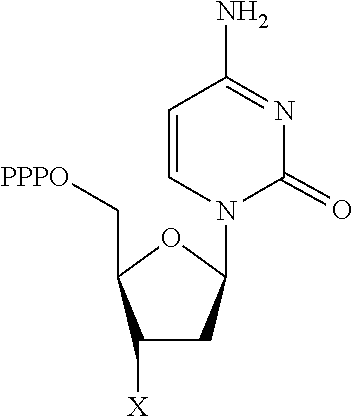
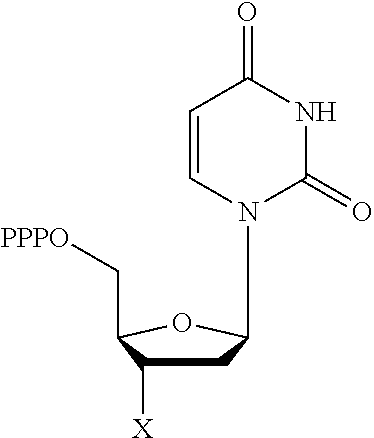
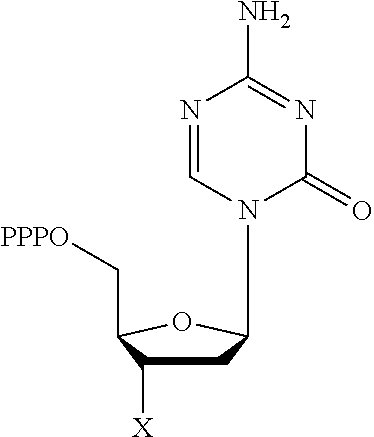
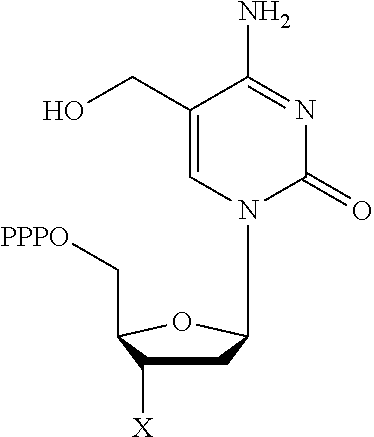
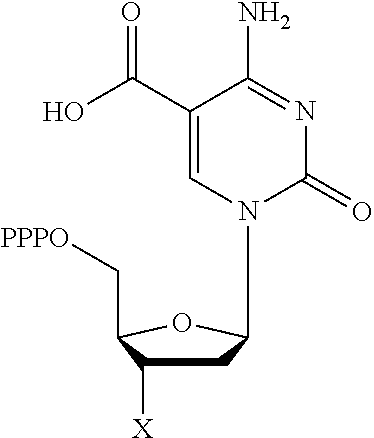
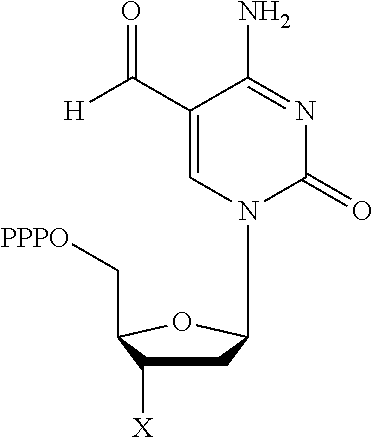
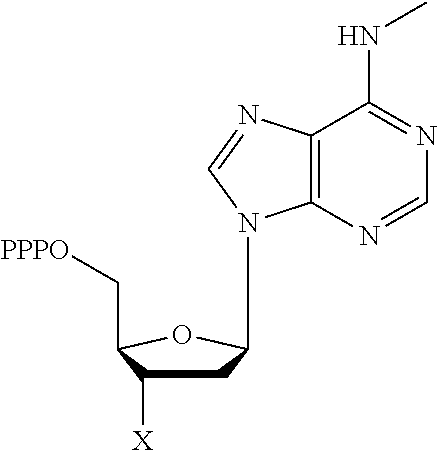
View All Diagrams
| United States Patent Application | 20220112534 |
| Kind Code | A1 |
| Chen; Michael C. ; et al. | April 14, 2022 |
Compositions and Methods Related to Nucleic Acid Synthesis
Abstract
The invention relates to the use of specific terminal deoxynucleotidyl transferase (TdT) enzymes in a method of nucleic acid synthesis, to methods of synthesizing nucleic acids, and to the use of kits comprising said enzymes in a method of nucleic acid synthesis. The invention also relates to the use of terminal deoxynucleotidyl transferases and 3'-blocked nucleotide triphosphates in a method of template independent nucleic acid synthesis.
| Inventors: | Chen; Michael C.; (Cambridge, GB) ; Lazar; Radu A.; (Cambridge, GB) ; Huang; Jiahao; (Cambridge, GB) ; McInroy; Gordon R.; (Cambridge, GB) | ||||||||||
| Applicant: |
|
||||||||||
|---|---|---|---|---|---|---|---|---|---|---|---|
| Assignee: | Nuclera Nucleics Ltd. Cambridge GB |
||||||||||
| Appl. No.: | 17/554012 | ||||||||||
| Filed: | December 17, 2021 |
Related U.S. Patent Documents
| Application Number | Filing Date | Patent Number | ||
|---|---|---|---|---|
| 16923656 | Jul 8, 2020 | 11236377 | ||
| 17554012 | ||||
| 15549602 | Aug 8, 2017 | 10745727 | ||
| PCT/GB2016/050301 | Feb 10, 2016 | |||
| 16923656 | ||||
| International Class: | C12P 19/34 20060101 C12P019/34; C12N 9/12 20060101 C12N009/12; C12Q 1/68 20060101 C12Q001/68 |
Foreign Application Data
| Date | Code | Application Number |
|---|---|---|
| Feb 10, 2015 | GB | 1502152.0 |
Claims
1. Use of a terminal deoxynucleotidyl transferase (TdT) enzyme comprising an amino acid sequence selected from either: (a) any one of SEQ ID NOS: 1 to 5 and 8 or a functional equivalent or fragment thereof having at least 20% sequence homology to said amino acid sequence; or (b) a modified derivative of SEQ ID NO: 6; in a method of nucleic acid synthesis.
2. The use as defined in claim 1, wherein the terminal deoxynucleotidyl transferase (TdT) enzyme comprises an amino acid sequence selected from any one of SEQ ID NOS: 1 to 5 and 8 or a functional equivalent or fragment thereof having at least 20% sequence homology to said amino acid sequence.
3. The use as defined in claim 1 or claim 2, wherein the terminal deoxynucleotidyl transferase (TdT) enzyme comprises an amino acid sequence selected from SEQ ID NOS: 1, 2 or 8 or a functional equivalent or fragment thereof having at least 20% sequence homology to said amino acid sequence.
4. A method of nucleic acid synthesis, which comprises the steps of: (a) providing an initiator sequence; (b) adding a 3'-blocked nucleotide triphosphate to said initiator sequence in the presence of a terminal deoxynucleotidyl transferase (TdT) as defined in any one of claims 1 to 3; (c) removal of all reagents from the initiator sequence; (d) cleaving the blocking group from the 3'-blocked nucleotide triphosphate in the presence of a cleaving agent; (e) removal of the cleaving agent.
5. The method as defined in claim 4, wherein greater than 1 nucleotide is added by repeating steps (b) to (e).
6. The method as defined in claim 4 or claim 5, wherein the 3'-blocked nucleotide triphosphate is blocked by either a 3'-O-azidomethyl, 3'-aminoxy or 3'-O-allyl group.
7. The method as defined in any one of claims 4 to 6, wherein the terminal deoxynucleotidyl transferase (TdT) is added in the presence of an extension solution comprising one or more buffers, such as Tris or cacodylate, one or more salts, and inorganic pyrophosphatase, such as purified, recombinant inorganic pyrophosphatase from Saccharomyces cerevisiae.
8. The method as defined in any one of claims 4 to 7, wherein step (b) is performed at a pH range between 5 and 10.
9. The method as defined in any one of claims 4 to 8, wherein the cleaving agent is a chemical cleaving agent.
10. The method as defined in any one of claims 4 to 9, wherein the cleaving agent is an enzymatic cleaving agent.
11. The method as defined in any one of claims 4 to 10, wherein the cleaving agent is selected from: tris(2-carboxyethyl)phosphine (TCEP), a palladium complex or sodium nitrite.
12. The method as defined in any one of claims 4 to 11, wherein the cleaving agent is added in the presence of a cleavage solution comprising a denaturant, such as urea, guanidinium chloride, formamide or betaine, and one or more buffers.
13. The method as defined in any one of claims 4 to 12, wherein step (d) is performed at a temperature less than 99.degree. C.
14. The method as defined in any one of claims 4 to 13, wherein steps (c) and (e) are performed by applying a wash solution.
15. The method as defined in any one of claims 4 to 14, wherein the method is performed within a flow instrument, such as a microfluidic or column-based flow instrument.
16. The method as defined in any one of claims 4 to 14, wherein the method is performed within a plate or microarray setup.
17. The method as defined in any one of claims 4 to 16, wherein the initiator sequence is between 5 and 50 nucleotides long, such as between 10 and 30 nucleotides long, in particular approximately 20 nucleotides long.
18. The method as defined in any one of claims 4 to 17, wherein the initiator sequence is single-stranded or double-stranded.
19. The method as defined in any one of claims 4 to 18, wherein the initiator sequence is immobilised on a solid support.
20. The method as defined in claim 19, wherein the initiator sequence is immobilised via a reversible interacting moiety.
21. The method as defined in claim 20, which additionally comprises extracting the resultant nucleic acid by removing the reversible interacting moiety.
22. The method as defined in claim 20, wherein the reversible interacting moiety is a chemically-cleavable linker, such as a disulfide, allyl or azide-masked hemiaminal ether.
23. The method as defined in claim 22, which additionally comprises extracting the resultant nucleic acid by cleaving the chemically-cleavable linker, such as by the addition of tris(2-carboxyethyl)phosphine (TCEP), dithiothreitol (DTT) or a palladium complex.
24. The method as defined in any one of claims 4 to 19, wherein the initiator sequence contains at least one restriction site.
25. The method as defined in claim 24, which additionally comprises extracting the resultant nucleic acid by using a restriction enzyme.
26. The method as defined in any one of claims 4 to 25, wherein the initiator sequence contains at least one uridine.
27. The method as defined in any one of claims 4 to 26, which additionally comprises amplifying the resultant nucleic acid, such as by PCR.
28. Use of a kit in a method of nucleic acid synthesis, wherein said kit comprises a TdT as defined in any one of claims 1 to 3, optionally in combination with one or more components selected from: an initiator sequence, one or more 3'-blocked nucleotide triphosphates, inorganic pyrophosphatase, such as purified, recombinant inorganic pyrophosphatase from Saccharomyces cerevisiae, and a cleaving agent; further optionally together with instructions for use of the kit in accordance with the method as defined in any one of claims 4 to 27.
29. The use as defined in claim 28, which additionally comprises one or more components selected from the group: an extension solution, a wash solution and/or a cleaving solution.
30. Use of a 3'-blocked nucleotide triphosphate in a method of template independent nucleic acid synthesis, wherein the 3'-blocked nucleotide triphosphate is selected from a compound of formula (I), (II), (III) or (IV): ##STR00014## wherein R.sup.1 represents NR.sup.aR.sup.b, wherein R.sup.a and R.sup.b independently represent hydrogen or C.sub.1-6 alkyl, R.sup.2 represents hydrogen, C.sub.1-6 alkyl, C.sub.1-6 alkoxy, COH or COOH. X represents C.sub.1-6 alkyl, NH.sub.2, N.sub.3 or --OR.sup.3, R.sup.3 represents C.sub.1-6 alkyl, CH.sub.2N.sub.3, NH.sub.2 or allyl, Y represents hydrogen, halogen or hydroxyl, and Z represents CR.sup.4 or N, wherein R.sup.4 represents hydrogen, C.sub.1-6 alkyl, C.sub.1-6alkoxy, COH or COOH.
31. The use as defined in claim 30, wherein R.sup.a and R.sup.b both represent hydrogen or R.sup.a represents hydrogen and R.sup.b represents methyl.
32. The use as defined in claim 30 or claim 31, wherein R.sup.2 represents hydrogen, methyl or methoxy.
33. The use as defined in any one of claims 30 to 32, wherein X represents --OR.sup.3 and R.sup.3 represents C.sub.1-6 alkyl, CH.sub.2N.sub.3, NH.sub.2 or allyl.
34. The use as defined in any one of claims 30 to 33, wherein Y represents hydrogen.
35. The use as defined in any one of claims 30 to 34, wherein Z represents CR.sup.4 and wherein R.sup.4 represents methoxy, COH or COOH.
36. The use as defined in any one of claims 30 to 35, wherein the 3'-blocked nucleotide triphosphate is selected from E1 to E11.
37. Use of inorganic pyrophosphatase in a method of nucleic acid synthesis.
38. The use as defined in claim 37, wherein the inorganic pyrophosphatase is purified, recombinant inorganic pyrophosphatase from Saccharomyces cerevisiae.
Description
FIELD OF THE INVENTION
[0001] The invention relates to the use of specific terminal deoxynucleotidyl transferase (TdT) enzymes in a method of nucleic acid synthesis, to methods of synthesizing nucleic acids, and to the use of kits comprising said enzymes in a method of nucleic acid synthesis. The invention also relates to the use of terminal deoxynucleotidyl transferases and 3'-blocked nucleotide triphosphates in a method of template independent nucleic acid synthesis.
BACKGROUND OF THE INVENTION
[0002] Nucleic acid synthesis is vital to modern biotechnology. The rapid pace of development in the biotechnology arena has been made possible by the scientific community's ability to artificially synthesise DNA, RNA and proteins.
[0003] Artificial DNA synthesis--a .English Pound.1 billion and growing market--allows biotechnology and pharmaceutical companies to develop a range of peptide therapeutics, such as insulin for the treatment of diabetes. It allows researchers to characterise cellular proteins to develop new small molecule therapies for the treatment of diseases our aging population faces today, such as heart disease and cancer. It even paves the way forward to creating life, as the Venter Institute demonstrated in 2010 when they placed an artificially synthesised genome into a bacterial cell.
[0004] However, current DNA synthesis technology does not meet the demands of the biotechnology industry. While the benefits of DNA synthesis are numerous, an oft-mentioned problem prevents the further growth of the artificial DNA synthesis industry, and thus the biotechnology field. Despite being a mature technology, it is practically impossible to synthesise a DNA strand greater than 200 nucleotides in length, and most DNA synthesis companies only offer up to 120 nucleotides. In comparison, an average protein-coding gene is of the order of 2000-3000 nucleotides, and an average eukaryotic genome numbers in the billions of nucleotides. Thus, all major gene synthesis companies today rely on variations of a `synthesise and stitch` technique, where overlapping 40-60-mer fragments are synthesised and stitched together by PCR (see Young, L. et al. (2004) Nucleic Acid Res. 32, e59). Current methods offered by the gene synthesis industry generally allow up to 3 kb in length for routine production.
[0005] The reason DNA cannot be synthesised beyond 120-200 nucleotides at a time is due to the current methodology for generating DNA, which uses synthetic chemistry (i.e., phosphoramidite technology) to couple a nucleotide one at a time to make DNA. As the efficiency of each nucleotide-coupling step is 95.0-99.5% efficient, it is mathematically impossible to synthesise DNA longer than 200 nucleotides in acceptable yields. The Venter Institute illustrated this laborious process by spending 4 years and 20 million USD to synthesise the relatively small genome of a bacterium (see Gibson, D. G. et al. (2010) Science 329, 52-56).
[0006] Known methods of DNA sequencing use template-dependent DNA polymerases to add 3'-reversibly terminated nucleotides to a growing double-stranded substrate (see, Bentley, D. R. et al. (2008) Nature 456, 53-59). In the `sequencing-by-synthesis` process, each added nucleotide contains a dye, allowing the user to identify the exact sequence of the template strand. Albeit on double-stranded DNA, this technology is able to produce strands of between 500-1000 bps long. However, this technology is not suitable for de novo nucleic acid synthesis because of the requirement for an existing nucleic acid strand to act as a template.
[0007] Various attempts have been made to use a terminal deoxynucleotidyl transferase for controlled de novo single-stranded DNA synthesis (see Ud-Dean, S. M. M. (2009) Syst Synth Boil 2, 67-73, U.S. Pat. Nos. 5,763,594 and 8,808,989). Uncontrolled de novo single-stranded DNA synthesis, as opposed to controlled, takes advantage of TdT's deoxynucleotide triphosphate (dNTP) 3' tailing properties on single-stranded DNA to create, for example, homopolymeric adaptor sequences for next-generation sequencing library preparation (see Roychoudhury R., et al. (1976) Nucleic Acids Res 3, 101-116 and WO 2003/050242). A reversible deoxynucleotide triphosphate termination technology needs to be employed to prevent uncontrolled addition of dNTPs to the 3'-end of a growing DNA strand. The development of a controlled single-stranded DNA synthesis process through TdT would be invaluable to in situ DNA synthesis for gene assembly or hybridization microarrays as it removes the need for an anhydrous environment and allows the use of various polymers incompatible with organic solvents (see Blanchard, A. P. (1996) Biosens Bioelectron 11, 687-690 and U.S. Pat. No. 7,534,561).
[0008] However, TdT has not been shown to efficiently add nucleotide triphosphates containing 3'-O reversibly terminating moieties for building up a nascent single-stranded DNA chain necessary for a de novo synthesis cycle. A 3'-O reversible terminating moiety would prevent a terminal transferase like TdT from catalysing the nucleotide transferase reaction between the 3'-end of a growing DNA strand and the 5'-triphosphate of an incoming nucleotide triphosphate. Data is presented herein which demonstrates that the widely commercially available recombinant TdT sourced from calf thymus is unable to add 3'-O-terminated nucleotide triphosphates in a quantitative fashion (see FIG. 3). In previous reports, the TdT specifically mentioned is recombinant TdT from calf thymus (see Ud-Dean, S. M. M. (2009) Syst Synth Boil 2, 67-73, U.S. Pat. Nos. 5,763,594 and 8,808,989) or uses a different reversible terminating mechanism not located on the 3' end of the deoxyribose moiety (see U.S. Pat. No. 8,808,989).
[0009] Most DNA and RNA polymerases contain highly selective sugar steric gates to tightly discriminate between deoxyribose and ribose nucleotide triphosphate substrates (see Joyce C. M. (1997) Proc Natl Acad Sci 94, 1619-22). The result of this sugar steric gate is the enormous challenge of finding and/or engineering polymerases to accept sugar variants for biotechnology reasons, such as sequencing-by-synthesis (see Metzker M. L. (2010) Nat Rev Genet 11, 31-46 and U.S. Pat. No. 8,460,910). The challenge of finding a polymerase that accepts a 3'-O reversibly terminating nucleotide is so large, various efforts have been made to create reversible terminating nucleotides where the polymerase termination mechanism is located on the nitrogenous base of the terminating nucleotide (see Gardner, A. F. (2012) Nucleic Acids Res 40, 7404-15 and U.S. Pat. No. 8,889,860).
[0010] There is therefore a need to identify terminal deoxynucleotidyl transferases that readily incorporate 3'-O reversibly terminated nucleotides and modified said terminal deoxynucleotidyl transferases to incorporate 3'-O reversibly terminated nucleotides in a fashion useful for biotechnology and single-stranded DNA synthesis processes in order to provide an improved method of nucleic acid synthesis that is able to overcome the problems associated with currently available methods.
SUMMARY OF THE INVENTION
[0011] According to a first aspect of the invention, there is provided the use of a terminal deoxynucleotidyl transferase (TdT) enzyme comprising an amino acid sequence selected from either: (a) any one of SEQ ID NOS: 1 to 5 and 8 or a functional equivalent or fragment thereof having at least 20% sequence homology to said amino acid sequence; or (b) a modified derivative of SEQ ID NO: 6; in a method of nucleic acid synthesis.
[0012] According to a second aspect of the invention, there is provided a method of nucleic acid synthesis, which comprises the steps of: [0013] (a) providing an initiator sequence; [0014] (b) adding a 3'-blocked nucleotide triphosphate to said initiator sequence in the presence of a terminal deoxynucleotidyl transferase (TdT) as defined in the first aspect of the invention; [0015] (c) removal of all reagents from the initiator sequence; [0016] (d) cleaving the blocking group from the 3'-blocked nucleotide triphosphate in the presence of a cleaving agent; [0017] (e) removal of the cleaving agent.
[0018] According to a further aspect of the invention, there is provided the use of a kit in a method of nucleic acid synthesis, wherein said kit comprises a TdT as defined in the first or second aspects of the invention optionally in combination with one or more components selected from: an initiator sequence, one or more 3'-blocked nucleotide triphosphates, inorganic pyrophosphatase, such as purified, recombinant inorganic pyrophosphatase from Saccharomyces cerevisiae, and a cleaving agent; further optionally together with instructions for use of the kit in accordance with any of the methods defined herein.
[0019] According to a further aspect of the invention, there is provided the use of a 3'-blocked nucleotide triphosphate in a method of template independent nucleic acid synthesis, wherein the 3'-blocked nucleotide triphosphate is selected from a compound of formula (I), (II), (III) or (IV):
##STR00001##
[0020] wherein
[0021] R.sup.1 represents NR.sup.aR.sup.b, wherein R.sup.a and R.sup.b independently represent hydrogen or C.sub.1-6 alkyl,
[0022] R.sup.2 represents hydrogen, C.sub.1-6 alkyl, C.sub.1-6 alkoxy, COH or COOH.
[0023] X represents C.sub.1-6 alkyl, NH.sub.2, N.sub.3 or --OR.sup.3,
[0024] R.sup.3 represents C.sub.1-6 alkyl, CH.sub.2N.sub.3, NH.sub.2 or allyl,
[0025] Y represents hydrogen, halogen or hydroxyl, and
[0026] Z represents CR.sup.4 or N, wherein R.sup.4 represents hydrogen, C.sub.1-6 alkyl, C.sub.1-6alkoxy, COH or COOH.
[0027] According to a further aspect of the invention, there is provided the use of inorganic pyrophosphatase in a method of nucleic acid synthesis.
BRIEF DESCRIPTION OF THE FIGURES
[0028] FIG. 1: Schematic of enzymatic DNA synthesis process. Starting from the top of the diagram, an immobilised strand of DNA with a deprotected 3'-end is exposed to an extension mixture composed of TdT, a base-specific 3'-blocked nucleotide triphosphate, inorganic pyrophosphatase to reduce the buildup of inorganic pyrophosphate, and appropriate buffers/salts for optimal enzyme activity and stability. The protein adds one protected nucleotide to the immobilised DNA strand (bottom of diagram). The extension mixture is then removed with wash mixture and optionally recycled. The immobilised (n+1) DNA strand is then washed with a cleavage mixture to cleave the 3'-protecting group, enabling reaction in the next cycle. In the cleavage mixture, denaturant may be present to disrupt any secondary structures. During this step, the temperature may be raised to assist in cleavage and disruption of secondary structures. The immobilised DNA is treated with wash mixture to remove leftover cleavage mixture. Steps 1.about.4 may be repeated with an appropriate nucleotide triphosphate until the desired oligonucleotide sequence is achieved.
[0029] FIG. 2: TdT adds a 3'-irreversibly blocked nucleotide triphosphate to an initiator strand. (A) A single-stranded DNA initiator was incubated with 15 U Bos taurus TdT, required salts (50 mM potassium acetate, 20 mM tris acetate pH 7.9, 1 mM cobalt chloride), and 3'-O-Methyl dTTP at 37.degree. C. for the indicated amount of time. The 3'-irreversibly blocked nucleotide triphosphate was at a concentration of 1 mM and the DNA initiator at 200 pM for a 1:5000 ratio to encourage nucleotide addition. The reaction was stopped with EDTA (0.5 M). (B) Similar to (A) with the exception that 3'-Azido dTTP was used as the 3'-blocked nucleotide triphosphate.
[0030] FIG. 3: Various TdT orthologs add a 3'-reversibly protected (3'-O-azidomethyl) nucleotide triphosphate to an initiator strand up to 3.8-fold faster than Bos taurus TdT. (A) A single-stranded DNA initiator was incubated with TdT with the indicated species for 60 min in the above mentioned buffer and reaction conditions. Reactions were then analysed by capillary electrophoresis and a subset of chromatograms are shown. (B) Fraction of DNA initiator strand converted to N+1 species (addition of 3'-O-azidomethyl dTTP) in one hour. (C) Three TdT orthologs were reacted with 3'-O-azidomethyl dTTP and 3'-O-azidomethyl dCTP for 20 min. Lepisosteus oculatus and Sarcophilus harrisii TdT consistently perform better compared to Bos taurus TdT. The ability for TdT orthologs to add both dTTP and dCTP nucleotide analogs demonstrate control of DNA sequence specificity.
[0031] FIG. 4: An engineered variant of Lepisosteus oculatus TdT shows improved activity over the wild-type Lepisosteus oculatus TdT. A DNA initiator strand was incubated with 1 mM 3'-reversibly blocked dNTP at 37.degree. C. for 20 minutes with required salts as described previously. Addition of the dNTP was measured by PAGE and the conversion relative to wild-type TdT was plotted.
[0032] FIG. 5: An engineered variant of Lepisosteus oculatus shows vastly improved activity over the wild-type TdT (see FIG. 3) and commercially available Bos taurus TdT. TdT was incubated with a DNA initiator and a 3'-reversibly blocked dNTP in a similar fashion as previously described. Bos taurus TdT was outperformed by an engineered variant of Lepisosteus oculatus TdT, as demonstrated in the PAGE gel.
[0033] FIG. 6: Inorganic pyrophosphate is necessary for TdT-mediated, de novo sequence specific DNA synthesis. A nucleic acid initiator was incubated with and without Saccharomyces cerevisiae inorganic pyrophosphatase and Bos taurus TdT at 37.degree. C. in 50 mM potassium acetate, 20 mM tris acetate pH 7.9, 1.5 mM cobalt chloride. 3'-O-azidomethyl dTTP (N.sub.3Me-dTTP) was introduced at 1 mM and dideoxyTTP (ddTTP) was introduced at 100 .mu.M. The reactions were analysed by PAGE. Without inorganic pyrophosphatase, strand dismutation predominates and catastrophic loss of sequence-specificity occurs.
[0034] FIG. 7: Simplified schematic representation of a column-based flow instrument used in DNA synthesis. A computer (302) controls two pumps and a solution mixing chamber (311). Pump 1 (304) selectively pumps extension solution (301), wash solution (305) or cleavage solution (310) into the mixing chamber. Pump 2 (306) selectively pumps a single 3'-blocked nucleotide triphosphate (TP) solution containing either 3'-blocked A(adenine)TP (303), T(thymine)TP (307), G(guanine)TP (308), or C(cytosine)TP (309) into the chamber. The computer controlled mixing chamber then passes appropriate solution ratios from pump 1 and pump 2 into a column based DNA synthesis chamber (312). A heating element (313) ensures that the DNA synthesis column remains at the necessary temperature for the synthesis process to take place. Upon exiting the DNA synthesis chamber, the reaction solution either enters a recycling vessel (314) for future use, a waste vessel (316) or moves on to a polymerase chain reaction (PCR) step (315) for amplification of the resultant DNA. PCR completion leads to the final product (317).
DETAILED DESCRIPTION OF THE INVENTION
[0035] According to a first aspect of the invention, there is provided the use of a terminal deoxynucleotidyl transferase (TdT) enzyme comprising an amino acid sequence selected from either: (a) any one of SEQ ID NOS: 1 to 5 and 8 or a functional equivalent or fragment thereof having at least 20% sequence homology to said amino acid sequence; or (b) a modified derivative of SEQ ID NO: 6; in a method of nucleic acid synthesis.
[0036] According to one particular aspect of the invention which may be mentioned, there is provided the use of a terminal deoxynucleotidyl transferase (TdT) enzyme comprising an amino acid sequence selected from either: (a) any one of SEQ ID NOS: 1 to 5 or a functional equivalent or fragment thereof having at least 20% sequence homology to said amino acid sequence; or (b) a modified derivative of SEQ ID NO: 6; in a method of nucleic acid synthesis.
[0037] The present invention relates to the identification of never before studied terminal deoxynucleotidyl transferases that surprisingly have the ability to incorporate deoxynucleotide triphosphates with large 3'-O reversibly terminating moieties.
[0038] Since commercially available recombinant TdT sourced from calf thymus does not readily incorporate 3'-O reversibly terminated nucleotides, it is most unexpected that the present inventors have located a terminal deoxynucleotidyl transferase, which is a DNA polymerase, to accept a 3'-O reversibly terminating nucleotide, such as dNTPs modified with a 3'-O-azidomethyl.
[0039] Furthermore, the present invention relates to engineered terminal deoxynucleotidyl transferases, which achieve a substantial increase in incorporation rates of dNTPs containing 3'-O reversibly terminating moieties to be useful for the controlled de novo synthesis of single-stranded DNA.
[0040] As controlled de novo single-stranded DNA synthesis is an additive process, coupling efficiency is extremely important to obtaining practically useful yields of final single-stranded DNA product for use in applications such as gene assembly or hybridization microarrays. Thus, the present invention relates to the identification of TdT orthologs with the capability to add 3'-O reversibly terminated nucleotides, and also an engineered variant of the TdT ortholog that adds 3'-O reversibly terminated nucleotides in a quantitative fashion that is practically useful for a single-stranded DNA synthesis process.
[0041] The use described herein has significant advantages, such as the ability to rapidly produce long lengths of DNA while still maintaining high yields and without using any toxic organic solvents.
[0042] In one embodiment, the terminal deoxynucleotidyl transferase (TdT) enzyme comprises an amino acid sequence selected from any one of SEQ ID NOS: 1 to 5 and 8 or a functional equivalent or fragment thereof having at least 20% sequence homology to said amino acid sequence.
[0043] In a further embodiment, the terminal deoxynucleotidyl transferase (TdT) enzyme comprises an amino acid sequence selected from any one of SEQ ID NOS: 1 to 5 or a functional equivalent or fragment thereof having at least 20% sequence homology to said amino acid sequence.
[0044] In a further embodiment, the terminal deoxynucleotidyl transferase (TdT) enzyme comprises an amino acid sequence selected from SEQ ID NO: 1. The amino acid sequence of SEQ ID NO: 1 is the terminal deoxynucleotidyl transferase (TdT) sequence from Sarcophilus harrisii (UniProt: G3VQ55). Sarcophilus harrisii (also known as the Tasmanian devil) is a carnivorous marsupial of the family Dasyuridae, now found in the wild only on the Australian island state of Tasmania.
[0045] In a further embodiment, the terminal deoxynucleotidyl transferase (TdT) enzyme comprises an amino acid sequence selected from SEQ ID NO: 2. The amino acid sequence of SEQ ID NO: 2 is the terminal deoxynucleotidyl transferase (TdT) sequence from Lepisosteus oculatus (UniProt: W5MK82). Lepisosteus oculatus (also known as the spotted gar) is a primitive freshwater fish of the family Lepisosteidae, native to North America from the Lake Erie and southern Lake Michigan drainages south through the Mississippi River basin to Gulf Slope drainages, from lower Apalachicola River in Florida to Nueces River in Texas, USA.
[0046] In a further embodiment, the terminal deoxynucleotidyl transferase (TdT) enzyme comprises an amino acid sequence selected from SEQ ID NO: 3. The amino acid sequence of SEQ ID NO: 3 is the terminal deoxynucleotidyl transferase (TdT) sequence from Chinchilla lanigera (NCBI Reference Sequence: XP_005407631.1;
[0047] http://www.ncbi.nim.nih.gov/protein/533189443). Chinchilla lanigera (also known as the long-tailed chinchilla, Chilean, coastal, common chinchilla, or lesser chinchilla), is one of two species of rodents from the genus Chinchilla, the other species being Chinchilla chinchilla.
[0048] In a further embodiment, the terminal deoxynucleotidyl transferase (TdT) enzyme comprises an amino acid sequence selected from SEQ ID NO: 4. The amino acid sequence of SEQ ID NO: 4 is the terminal deoxynucleotidyl transferase (TdT) sequence from Otolemur garnettii (UniProt: A4PCE6). Otolemur garnettii (also known as the northern greater galago, Garnett's greater galago or small-eared greater galago), is a nocturnal, arboreal primate endemic to Africa.
[0049] In a further embodiment, the terminal deoxynucleotidyl transferase (TdT) enzyme comprises an amino acid sequence selected from SEQ ID NO: 5. The amino acid sequence of SEQ ID NO: 5 is the terminal deoxynucleotidyl transferase (TdT) sequence from Sus scrofa (UniProt: F1SBG2). Sus scrofa (also known as the wild boar, wild swine or Eurasian wild pig) is a suid native to much of Eurasia, North Africa and the Greater Sunda Islands.
[0050] In a further embodiment, the terminal deoxynucleotidyl transferase (TdT) enzyme comprises an amino acid sequence selected from SEQ ID NO: 8. The amino acid sequence of SEQ ID NO: 8 is a variant of SEQ ID NO: 2 which has been engineered for improved activity by alteration of the amino acid sequence. Data are provided in Example 3 and FIG. 4, which demonstrate the benefits of engineered variants, such as SEQ ID NO: 8, over the wild-type SEQ ID NO: 2.
[0051] In a further embodiment, the terminal deoxynucleotidyl transferase (TdT) enzyme comprises an amino acid sequence selected from SEQ ID NOS: 1, 2 or 8.
[0052] In a further embodiment, the terminal deoxynucleotidyl transferase (TdT) enzyme comprises an amino acid sequence selected from SEQ ID NO: 1 or 2. Data are provided in Example 2 and FIG. 3, which demonstrate beneficial results over the natural, recombinant TdT enzyme from Bos taurus.
[0053] In an alternative embodiment, the terminal deoxynucleotidyl transferase (TdT) enzyme comprises an amino acid sequence selected from a modified derivative of SEQ ID NO: 6 (i.e. a non-natural, mutated derivative of SEQ ID NO: 6). The amino acid sequence of SEQ ID NO: 6 is the terminal deoxynucleotidyl transferase (TdT) sequence from Bos taurus (UniProt: P06526). Bos taurus (also known as cattle, or colloquially cows) are the most common type of large domesticated ungulates. They are a prominent modern member of the subfamily Bovinae, are the most widespread species of the genus Bos.
[0054] References herein to "TdT" refer to a terminal deoxynucleotidyl transferase (TdT) enzyme and include references to purified and recombinant forms of said enzyme. TdT Is also commonly known as DNTT (DNA nucleotidylexotransferase) and any such terms should be used interchangeably.
[0055] References herein to a "method of nucleic acid synthesis" include methods of synthesising lengths of DNA (deoxyribonucleic acid) or RNA (ribonucleic acid) wherein a strand of nucleic acid (n) is extended by adding a further nucleotide (n+1). In one embodiment, the nucleic acid is DNA. In an alternative embodiment, the nucleic acid is RNA.
[0056] References herein to "method of DNA synthesis" refer to a method of DNA strand synthesis wherein a DNA strand (n) is extended by adding a further nucleotide (n+1). The method described herein provides a novel use of the terminal deoxynucleotidyl transferases of the invention and 3'-reversibly blocked nucleotide triphosphates to sequentially add nucleotides in de novo DNA strand synthesis which has several advantages over the DNA synthesis methods currently known in the art.
[0057] Current synthetic methods for coupling nucleotides to form sequence-specific DNA have reached asymptotic length limits, therefore a new method of de novo DNA synthesis is required. Synthetic DNA synthesis methods also have the disadvantage of using toxic organic solvents and additives (e.g., acetonitrile, acetic anhydride, trichloroacetic acid, pyridine, etc.), which are harmful to the environment.
[0058] An alternative, enzymatic method of nucleic acid synthesis is desirable. Natural enzymes such as DNA polymerases are able to add 50,000 nucleotides before disassociation. However, DNA polymerases require a template strand, thereby defeating the purpose of de novo strand synthesis.
[0059] However, a DNA polymerase, called TdT, capable of template-independent DNA synthesis is found in vertebrates. Given a free 3'-end and nucleotide triphosphates, recombinant TdTs from Bos taurus and Mus musculus were shown to add ten to several hundred nucleotides onto the 3'-end of a DNA strand. As shown in a paper by Basu, M. et al. (Biochem. Biophys. Res. Commun. (1983) 111, 1105-1112) TdT will uncontrollably add nucleotide triphosphates to the 3'-end of a DNA strand. However, this uncontrolled addition is unsuitable for controlled de novo strand synthesis where a sequence-specific oligonucleotide is required. Thus, commercially available recombinant TdT is used primarily as a tool for molecular biologists to label DNA with useful chemical tags.
[0060] The present inventors have discovered several orthologs of Bos taurus TdT that, coupled with 3'-reversibly protected nucleotide triphosphates, are able to synthesise DNA in a controlled manner. Bos taurus TdT is not efficient at incorporating nucleotide triphosphates with 3'-protecting groups, likely due to steric issues in the TdT active site. Data is presented herein in Example 2 and FIG. 3 which demonstrates that orthologs of Bos taurus TdT, such as the purified recombinant TdTs of the first aspect of the invention (in particular SEQ ID NOS: 1 and 2), are far more efficient at incorporating 3'-OH blocked nucleotide triphosphates, thereby enabling template-independent, sequence-specific synthesis of nucleic acid strands.
[0061] This enzymatic approach means that the method has the particular advantage of being able to produce DNA strands beyond the 120-200 nucleotide limit of current synthetic DNA synthesis methods. Furthermore, this enzymatic method avoids the need to use strong organic solvents which may be harmful to the environment.
[0062] It will be understood that the term `functional equivalent` refers to the polypeptides which are different to the exact sequence of the TdTs of the first aspect of the invention, but can perform the same function, i.e., catalyse the addition of a nucleotide triphosphate onto the 3'-end of a DNA strand in a template dependent manner.
[0063] In one embodiment, the terminal deoxynucleotidyl transferase (TdT) is a non-natural derivative of TdT, such as a functional fragment or homolog of the TdTs of the first aspect of the invention.
[0064] References herein to `fragment` include, for example, functional fragments with a C-terminal truncation, or with an N-terminal truncation. Fragments are suitably greater than 10 amino acids in length, for example greater than 15, 20, 25, 30, 35, 40, 45, 50, 55, 60, 65, 70, 75, 80, 85, 90, 95, 100, 110, 120, 130, 140, 150, 160, 170, 180, 190, 200, 210, 220, 230, 240, 250, 260, 270, 280, 290, 300, 310, 320, 330, 340, 350, 360, 370, 380, 390, 400, 410, 420, 430, 440, 450, 460, 470, 480, 490 or 500 amino acids in length.
[0065] It will be appreciated that references herein to "homology" are to be understood as meaning the percentage identity between two protein sequences, e.g.: SEQ ID NO: X and SEQ ID NO: Y, which is the sum of the common amino acids between aligned sequences SEQ ID NO: X and SEQ ID NO: Y, divided by the shorter length of either SEQ ID NO: X or SEQ ID NO: Y, expressed as a percentage.
[0066] In one embodiment, the terminal deoxynucleotidyl transferase (TdT) has at least 25% homology with the TdTs of the first aspect of the invention, such as at least 30%, 40%, 50%, 55%, 60%, 65%, 70%, 75%, 80%, 85%, 90%, 95%, 96%, 97%, 98% or 99% homology.
[0067] According to a second aspect of the invention, there is provided a method of nucleic acid synthesis, which comprises the steps of: [0068] (a) providing an initiator sequence; [0069] (b) adding a 3'-blocked nucleotide triphosphate to said initiator sequence in the presence of a terminal deoxynucleotidyl transferase (TdT) as defined in the first aspect of the invention; [0070] (c) removal of all reagents from the initiator sequence; [0071] (d) cleaving the blocking group from the 3'-blocked nucleotide triphosphate in the presence of a cleaving agent; [0072] (e) removal of the cleaving agent.
[0073] In one embodiment, step (c) comprises removal of deoxynucleotide triphosphates and TdT, such as TdT. Thus, according to one particular aspect of the invention, there is provided a method of nucleic acid synthesis, which comprises the steps of: [0074] (a) providing an initiator sequence; [0075] (b) adding a 3'-blocked nucleotide triphosphate to said initiator sequence in the presence of a terminal deoxynucleotidyl transferase (TdT) as defined in the first aspect of the invention; [0076] (c) removal of TdT; [0077] (d) cleaving the blocking group from the 3'-blocked nucleotide triphosphate in the presence of a cleaving agent; [0078] (e) removal of the cleaving agent.
[0079] It will be understood that steps (b) to (e) of the method may be repeated multiple times to produce a DNA or RNA strand of a desired length. Therefore, in one embodiment, greater than 1 nucleotide is added to the initiator sequence, such as greater than 5, 10, 20, 30, 40, 50, 60, 70, 80, 90, 100, 110 or 120 nucleotides are added to the initiator sequence by repeating steps (b) to (e). In a further embodiment, greater than 200 nucleotides are added, such as greater than 300, 400, 500, 600, 700, 800, 900, 1000, 1250, 1500, 1750, 2000, 2250, 2500, 2750, 3000, 4000, 5000, 6000, 7000, 8000, 9000 or 10000 nucleotides.
[0080] 3'-Blocked Nucleotide Triphosphates
[0081] References herein to `nucleotide triphosphates` refer to a molecule containing a nucleoside (i.e. a base attached to a deoxyribose or ribose sugar molecule) bound to three phosphate groups. Examples of nucleotide triphosphates that contain deoxyribose are: deoxyadenosine triphosphate (dATP), deoxyguanosine triphosphate (dGTP), deoxycytidine triphosphate (dCTP) or deoxythymidine triphosphate (dTTP). Examples of nucleotide triphosphates that contain ribose are: adenosine triphosphate (ATP), guanosine triphosphate (GTP), cytidine triphosphate (CTP) or uridine triphosphate (UTP). Other types of nucleosides may be bound to three phosphates to form nucleotide triphosphates, such as naturally occurring modified nucleosides and artificial nucleosides.
[0082] Therefore, references herein to `3`-blocked nucleotide triphosphates' refer to nucleotide triphosphates (e.g., dATP, dGTP, dCTP or dTTP) which have an additional group on the 3' end which prevents further addition of nucleotides, i.e., by replacing the 3'-OH group with a protecting group.
[0083] It will be understood that references herein to `3`-block`, `3`-blocking group` or `3`-protecting group` refer to the group attached to the 3' end of the nucleotide triphosphate which prevents further nucleotide addition. The present method uses reversible 3'-blocking groups which can be removed by cleavage to allow the addition of further nucleotides. By contrast, irreversible 3'-blocking groups refer to dNTPs where the 3'-OH group can neither be exposed nor uncovered by cleavage.
[0084] There exist several documented reversible protecting groups, such as azidomethyl, aminoxy, and allyl, which can be applied to the method described herein. Examples of suitable protecting groups are described in Greene's Protective Groups in Organic Synthesis, (Wuts, P. G. M. & Greene, T. W. (2012) 4th Ed., John Wiley & Sons).
[0085] In one embodiment, the 3'-blocked nucleotide triphosphate is blocked by a reversible protecting group. In an alternative embodiment, the 3'-blocked nucleotide triphosphate is blocked by an irreversible protecting group.
[0086] Therefore, in one embodiment, the 3'-blocked nucleotide triphosphate is blocked by either a 3'-O-methyl, 3'-azido, 3'-O-azidomethyl, 3'-aminoxy or 3'-O-allyl group. In a further embodiment, the 3'-blocked nucleotide triphosphate is blocked by either a 3'-O-azidomethyl, 3'-aminoxy or 3'-O-allyl group. In an alternative embodiment, the 3'-blocked nucleotide triphosphate is blocked by either a 3'-O-methyl or 3'-azido group.
[0087] Cleaving Agent References herein to `cleaving agent` refer to a substance which is able to cleave the 3'-blocking group from the 3'-blocked nucleotide triphosphate.
[0088] The 3'-blocking groups described herein may all be quantitatively removed in aqueous solution with documented compounds which may be used as cleaving agents (for example, see: Wuts, P. G. M. & Greene, T. W. (2012) 4th Ed., John Wiley & Sons; Hutter, D. et al. (2010) Nucleosides Nucleotides Nucleic Acids 29, 879-895; EP 1560838 and U.S. Pat. No. 7,795,424).
[0089] In one embodiment, the cleaving agent is a chemical cleaving agent. In an alternative embodiment, the cleaving agent is an enzymatic cleaving agent.
[0090] It will be understood by the person skilled in the art that the selection of cleaving agent is dependent on the type of 3'-nucleotide blocking group used. For instance, tris(2-carboxyethyl)phosphine (TCEP) can be used to cleave a 3'-O-azidomethyl group, palladium complexes can be used to cleave a 3'-O-allyl group, or sodium nitrite can be used to cleave a 3'-aminoxy group. Therefore, in one embodiment, the cleaving agent is selected from: tris(2-carboxyethyl)phosphine (TCEP), a palladium complex or sodium nitrite.
[0091] In one embodiment, the cleaving agent is added in the presence of a cleavage solution comprising a denaturant, such as urea, guanidinium chloride, formamide or betaine. The addition of a denaturant has the advantage of being able to disrupt any undesirable secondary structures in the DNA. In a further embodiment, the cleavage solution comprises one or more buffers. It will be understood by the person skilled in the art that the choice of buffer is dependent on the exact cleavage chemistry and cleaving agent required.
[0092] Initiator Sequences
[0093] References herein to an `initiator sequence` refer to a short oligonucleotide with a free 3'-end which the 3'-blocked nucleotide triphosphate can be attached to. In one embodiment, the initiator sequence is a DNA initiator sequence. In an alternative embodiment, the initiator sequence is an RNA initiator sequence.
[0094] References herein to a `DNA initiator sequence` refer to a small sequence of DNA which the 3'-blocked nucleotide triphosphate can be attached to, i.e. DNA will be synthesised from the end of the DNA initiator sequence.
[0095] In one embodiment, the initiator sequence is between 5 and 50 nucleotides long, such as between 5 and 30 nucleotides long (i.e. between 10 and 30), in particular between 5 and 20 nucleotides long (i.e., approximately 20 nucleotides long), more particularly 5 to 15 nucleotides long, for example 10 to 15 nucleotides long, especially 12 nucleotides long.
[0096] In one embodiment, the initiator sequence has the following sequence: 5'-CGTTAACATATT-3' (SEQ ID NO: 7).
[0097] In one embodiment, the initiator sequence is single-stranded. In an alternative embodiment, the initiator sequence is double-stranded. It will be understood by persons skilled in the art that a 3'-overhang (i.e., a free 3'-end) allows for efficient addition.
[0098] In one embodiment, the initiator sequence is immobilised on a solid support. This allows TdT and the cleaving agent to be removed (in steps (c) and (e), respectively) without washing away the synthesised nucleic acid. The initiator sequence may be attached to a solid support stable under aqueous conditions so that the method can be easily performed via a flow setup.
[0099] In one embodiment, the initiator sequence is immobilised on a solid support via a reversible interacting moiety, such as a chemically-cleavable linker, an antibody/immunogenic epitope, a biotin/biotin binding protein (such as avidin or streptavidin), or glutathione-GST tag. Therefore, in a further embodiment, the method additionally comprises extracting the resultant nucleic acid by removing the reversible interacting moiety in the initiator sequence, such as by incubating with proteinase K.
[0100] In a further embodiment, the initiator sequence is immobilised on a solid support via a chemically-cleavable linker, such as a disulfide, allyl, or azide-masked hemiaminal ether linker. Therefore, in one embodiment, the method additionally comprises extracting the resultant nucleic acid by cleaving the chemical linker through the addition of tris(2-carboxyethyl)phosphine (TCEP) or dithiothreitol (DTT) for a disulfide linker; palladium complexes for an allyl linker; or TCEP for an azide-masked hemiaminal ether linker.
[0101] In one embodiment, the resultant nucleic acid is extracted and amplified by polymerase chain reaction using the nucleic acid bound to the solid support as a template. The initiator sequence could therefore contain an appropriate forward primer sequence and an appropriate reverse primer could be synthesised.
[0102] In an alternative embodiment, the immobilised initiator sequence contains at least one restriction site. Therefore, in a further embodiment, the method additionally comprises extracting the resultant nucleic acid by using a restriction enzyme.
[0103] The use of restriction enzymes and restriction sites to cut nucleic acids in a specific location is well known in the art. The choice of restriction site and enzyme can depend on the desired properties, for example whether `blunt` or `sticky` ends are required. Examples of restriction enzymes include: AluI, BamHI, EcoRI, EcoRII, EcoRV, HaeII, HgaI, HindIII, HinfI, NotI, PstI, PvuII, SaII, Sau3A, ScaI, SmaI, TaqI and XbaI.
[0104] In an alternative embodiment, the initiator sequence contains at least one uridine. Treatment with uracil-DNA glycosylase (UDG) generates an abasic site. Treatment on an appropriate substrate with an apurinic/apyrimidinic (AP) site endonuclease will extract the nucleic acid strand.
[0105] Nucleic Acid Synthesis Method
[0106] In one embodiment, the terminal deoxynucleotidyl transferase (TdT) of the invention is added in the presence of an extension solution comprising one or more buffers (e.g., Tris or cacodylate), one or more salts (e.g., Na.sup.+, K.sup.+, Mg.sup.2+, Mn.sup.2+, Cu.sup.2+, Zn.sup.2+, Co.sup.2+, etc., all with appropriate counterions, such as Cl.sup.-) and inorganic pyrophosphatase (e.g., the Saccharomyces cerevisiae homolog). It will be understood that the choice of buffers and salts depends on the optimal enzyme activity and stability.
[0107] The use of an inorganic pyrophosphatase helps to reduce the build-up of pyrophosphate due to nucleotide triphosphate hydrolysis by TdT. Therefore, the use of an inorganic pyrophosphatase has the advantage of reducing the rate of (1) backwards reaction and (2) TdT strand dismutation. Thus, according to a further aspect of the invention, there is provided the use of inorganic pyrophosphatase in a method of nucleic acid synthesis. Data is presented herein in Example 5 and FIG. 6 which demonstrates the benefit of the use of inorganic pyrophosphatase during nucleic acid synthesis. In one embodiment, the inorganic pyrophosphatase comprises purified, recombinant inorganic pyrophosphatase from Saccharomyces cerevisiae.
[0108] In one embodiment, step (b) is performed at a pH range between 5 and 10. Therefore, it will be understood that any buffer with a buffering range of pH 5-10 could be used, for example cacodylate, Tris, HEPES or Tricine, in particular cacodylate or Tris.
[0109] In one embodiment, step (d) is performed at a temperature less than 99.degree. C., such as less than 95.degree. C., 90.degree. C., 85.degree. C., 80.degree. C., 75.degree. C., 70.degree. C., 65.degree. C., 60.degree. C., 55.degree. C., 50.degree. C., 45.degree. C., 40.degree. C., 35.degree. C., or 30.degree. C. It will be understood that the optimal temperature will depend on the cleavage agent utilised. The temperature used helps to assist cleavage and disrupt any secondary structures formed during nucleotide addition.
[0110] In one embodiment, steps (c) and (e) are performed by applying a wash solution. In one embodiment, the wash solution comprises the same buffers and salts as used in the extension solution described herein. This has the advantage of allowing the wash solution to be collected after step (c) and recycled as extension solution in step (b) when the method steps are repeated.
[0111] In one embodiment, the method is performed within a flow instrument as shown in FIG. 7, such as a microfluidic or column-based flow instrument. The method described herein can easily be performed in a flow setup which makes the method simple to use. It will be understood that examples of commercially available DNA synthesisers (e.g., MerMade 192E from BioAutomation or H-8 SE from K&A) may be optimised for the required reaction conditions and used to perform the method described herein.
[0112] In one embodiment, the method is performed on a plate or microarray setup. For example, nucleotides may be individually addressed through a series of microdispensing nozzles using any applicable jetting technology, including piezo and thermal jets. This highly parallel process may be used to generate hybridization microarrays and is also amenable to DNA fragment assembly through standard molecular biology techniques.
[0113] In one embodiment, the method additionally comprises amplifying the resultant nucleic acid. Methods of DNA/RNA amplification are well known in the art. For example, in a further embodiment, the amplification is performed by polymerase chain reaction (PCR). This step has the advantage of being able to extract and amplify the resultant nucleic acid all in one step.
[0114] The template independent nucleic acid synthesis method described herein has the capability to add a nucleic acid sequence of defined composition and length to an initiator sequence. Therefore, it will be understood by persons skilled in the art, that the method described herein may be used as a novel way to introduce adapter sequences to a nucleic acid library.
[0115] If the initiator sequence is not one defined sequence, but instead a library of nucleic acid fragments (for example generated by sonication of genomic DNA, or for example messenger RNA) then this method is capable of de novo synthesis of `adapter sequences` on every fragment. The installation of adapter sequences is an integral part of library preparation for next-generation library nucleic acid sequencing methods, as they contain sequence information allowing hybridisation to a flow cell/solid support and hybridisation of a sequencing primer.
[0116] Currently used methods include single-stranded ligation, however this technique is limited because ligation efficiency decreases strongly with increasing fragment length. Consequently, current methods are unable to attach sequences longer than 100 nucleotides in length. Therefore, the method described herein allows for library preparation in an improved fashion to that which is currently possible.
[0117] Therefore, in one embodiment, an adapter sequence is added to the initiator sequence. In a further embodiment, the initiator sequence may be a nucleic acid from a library of nucleic acid fragments.
[0118] Kits
[0119] According to a further aspect of the invention, there is provided the use of a kit in a method of nucleic acid synthesis, wherein said kit comprises a TdT as defined in the first or second aspects of the invention optionally in combination with one or more components selected from: an initiator sequence, one or more 3'-blocked nucleotide triphosphates, inorganic pyrophosphatase, such as purified, recombinant inorganic pyrophosphatase from Saccharomyces cerevisiae, and a cleaving agent; further optionally together with instructions for use of the kit in accordance with any of the methods defined herein.
[0120] Suitably a kit according to the invention may also contain one or more components selected from the group: an extension solution, a wash solution and/or a cleaving solution as defined herein; optionally together with instructions for use of the kit in accordance with any of the methods defined herein.
[0121] Use of 3'-Blocked Nucleotide Triphosphates
[0122] According to a further aspect of the invention, there is provided the use of a 3'-blocked nucleotide triphosphate in a method of template independent nucleic acid synthesis, wherein the 3'-blocked nucleotide triphosphate is selected from a compound of formula (I), (II), (III) or (IV):
##STR00002##
[0123] wherein
[0124] R.sup.1 represents NR.sup.aR.sup.b, wherein R.sup.a and R.sup.b independently represent hydrogen or C.sub.1-6 alkyl,
[0125] R.sup.2 represents hydrogen, C.sub.1-6 alkyl, C.sub.1-6 alkoxy, COH or COOH.
[0126] X represents C.sub.1-6 alkyl, NH.sub.2, N.sub.3 or --OR.sup.3,
[0127] R.sup.3 represents C.sub.1-6 alkyl, CH.sub.2N.sub.3, NH.sub.2 or allyl,
[0128] Y represents hydrogen, halogen or hydroxyl, and
[0129] Z represents CR.sup.4 or N, wherein R.sup.4 represents hydrogen, C.sub.1-6 alkyl, C.sub.1-6alkoxy, COH or COOH.
[0130] References herein to a "template independent nucleic acid synthesis method" refer to a method of nucleic acid synthesis which does not require a template DNA/RNA strand, i.e. the nucleic acid can be synthesised de novo.
[0131] In one embodiment, the nucleic acid is DNA. References herein to a "template independent DNA synthesis method" refer to a method of DNA synthesis which does not require a template DNA strand, i.e. the DNA can be synthesised de novo. In an alternative embodiment, the nucleic acid is RNA.
[0132] It will be understood that PPP' in the structures shown herein represents a triphosphate group.
[0133] References to the term `C.sub.1-6 alkyl` as used herein as a group or part of a group refers to a linear or branched saturated hydrocarbon group containing from 1 to 6 carbon atoms. Examples of such groups include methyl, ethyl, butyl, n-propyl, isopropyl and the like.
[0134] References to the term `C.sub.1-6 alkoxy` as used herein refer to an alkyl group bonded to oxygen via a single bond (i.e. R--O). Such references include those with straight and branched alkyl chains containing 1 to 6 carbon atoms, such as methoxy (or methyloxy), ethyloxy, n-propyloxy, iso-propyloxy, n-butyloxy and 2-methylpropyloxy.
[0135] References to the term `allyl` as used herein refer to a substituent with the structural formula RCH.sub.2--CH.dbd.CH.sub.2, where R is the rest of the molecule. It consists of a methyl group (--CH.sub.2--) attached to a vinyl group (--CH.dbd.CH.sub.2).
[0136] References to the term `COOH` or `CO.sub.2H` refer to a carboxyl group (or carboxy) which consists of a carbonyl (C.dbd.O) and a hydroxyl (O--H) group. References to the term `COH` refer to a formyl group which consists of a carbonyl (C.dbd.O) group bonded to hydrogen.
[0137] The term `N.sub.3` (drawn structurally as --N.dbd.N.sup.+.dbd.N.sup.-) refers to an azido group.
[0138] In one embodiment, R.sup.a and R.sup.b both represent hydrogen (i.e. R.sup.1 represents NH.sub.2).
[0139] In an alternative embodiment, R.sup.a represents hydrogen and R.sup.b represents methyl (i.e. R.sup.1 represents NHCH.sub.3).
[0140] In one embodiment, R.sup.2 represents hydrogen, methyl or methoxy. In a further embodiment, R.sup.2 represents hydrogen. In an alternative embodiment, R.sup.2 represents methyl. In a yet further alternative embodiment, R.sup.2 represents methoxy.
[0141] In one embodiment, X represents--OR.sup.3, and R.sup.3 represents C.sub.1-6 alkyl, CH.sub.2N.sub.3, NH.sub.2 or allyl.
[0142] In an alternative embodiment, X represents C.sub.1-6 alkyl (such as methyl) or N.sub.3.
[0143] In one embodiment, Y represents hydrogen or hydroxyl.
[0144] In one embodiment, Y represents hydrogen.
[0145] In an alternative embodiment, Y represents hydroxyl.
[0146] In an alternative embodiment, Y represents halogen, such as fluorine.
[0147] In one embodiment, Z represents N.
[0148] In an alternative embodiment, Z represents CR.sup.4.
[0149] In one embodiment, R.sup.4 represents C.sub.1-6 alkyl, C.sub.1-6alkoxy, COH or COOH.
[0150] In a further embodiment, R.sup.4 represents methoxy, COOH or COH. In a yet further embodiment, R.sup.4 represents methoxy. In an alternative embodiment, R.sup.4 represents COOH. In a yet further alternative embodiment, R.sup.4 represents COH.
[0151] In one embodiment, the 3'-blocked nucleotide triphosphate is selected from:
TABLE-US-00001 Structure Name Example number ##STR00003## Deoxyadenosine triphosphate E1 ##STR00004## Deoxyguanosine triphosphate E2 ##STR00005## Deoxythymidine triphosphate E3 ##STR00006## Deoxycytidine triphosphate E4 ##STR00007## 2'-deoxy-uridine triphosphate E5 ##STR00008## 5-aza-2'-deoxy-cytidine- triphosphate E6 ##STR00009## 5-hydroxymethyl- deoxycytidine triphosphate E7 ##STR00010## 5-carboxy-deoxycytidine triphosphate E8 ##STR00011## 5-formyl-deoxycytidine triphosphate E9 ##STR00012## N6-methyladenosine triphosphate E10 ##STR00013## 5-hydroxymethyl-deoxy- uridine triphosphate E11
[0152] wherein `X` is as defined hereinbefore.
[0153] The following studies and protocols illustrate embodiments of the methods described herein:
Comparative Example 1: Use of Bos taurus TdT to Add 3'-Irreversibly Blocked Nucleotide Triphosphates to a DNA Initiator
[0154] A single-stranded DNA initiator (SEQ ID NO: 7) was incubated with 15 U Bos taurus TdT (Thermo Scientific), required salts (50 mM potassium acetate, 20 mM tris acetate pH 7.9, 1 mM cobalt chloride), and 3'-O-Methyl dTTP (TriLink) at 37.degree. C. for up to one hour. The 3'-irreversibly blocked nucleotide triphosphate was at a concentration of 1 mM and the DNA initiator at 200 .mu.M for a 1:5000 ratio to encourage nucleotide addition. The reaction was stopped with EDTA (0.5 M) at various intervals and the results are shown in FIG. 2(A).
[0155] The experiment was repeated with the exception that 3'-Azido dTTP was used as the 3'-irreversibly blocked nucleotide triphosphate instead of 3'-O-Methyl dTTP. The reaction was stopped with EDTA (0.5 M) at various intervals and the results are shown in FIG. 2(B).
[0156] These studies show that the commercially available Bos taurus TdT adds irreversibly blocked nucleotides, specifically 3'-O-Methyl dTTP and 3'-Azido dTTP onto a DNA initiator strand (FIG. 2). Furthermore, the addition of a 3'-blocked nucleotide triphosphate to a single-stranded DNA initiator is completed to greater than 90% conversion of the n strand to the n+1 strand.
Example 2: Use of TdT Orthologs Other than Bos Taurus TdT for Controlled Template-Independent DNA Synthesis
[0157] A single-stranded DNA initiator (SEQ ID NO: 7) was incubated with purified, recombinant TdT orthologs, required salts (50 mM potassium acetate, 20 mM tris acetate pH 7.9, 1.5 mM cobalt chloride, Saccharomyces cerevisiae inorganic pyrophosphatase), and 3'-O-azidomethyl dTTP at 37.degree. C. for 60 min. The 3'-blocked nucleotide triphosphate was at a concentration of 1 mM and the DNA initiator at 200 nM and analysed via capillary electrophoresis as shown in FIG. 3(A). Reactions were quantified after 60 min and results are shown in FIG. 3(B).
[0158] The experiment was repeated with the exception that both 3'-O-azidomethyl dTTP and 3'-O-azidomethyl dCTP was used as the 3'-blocked nucleotide triphosphate. The reaction was stopped after 20 min and analysed via capillary electrophoresis. Quantified reactions are shown in FIG. 3(C).
[0159] Bos taurus TdT only efficiently adds irreversibly blocked nucleotides, which is not useful for controlled, enzymatic single-stranded DNA synthesis. This example demonstrates that naturally occurring TdT orthologs other than Bos taurus TdT perform significantly better at adding 3'-reversibly blocked nucleotide triphosphates. Better performance, which is judged by the N+1 addition rate (FIG. 3), results in longer achievable lengths and greater control of nucleic acid sequence specificity.
Example 3: Engineered TdT Orthologs Demonstrate Improved Function Over Wild-Type Proteins
[0160] A single-stranded DNA initiator (SEQ ID NO: 7) was incubated with either a purified wild-type Lepisosteus oculatus TdT or a purified, recombinant engineered form of Lepisosteus oculatus TdT (SEQ ID NO: 8), required salts, cobalt chloride, Saccharomyces cerevisiae inorganic pyrophosphatase, and 3'-O-azidomethyl dTTP at 37.degree. C. for 20 min.
[0161] The wild-type Lepisosteus oculatus TdT was outperformed by the engineered variant (SEQ ID NO: 8), as demonstrated by improved ability to convert the initiator strand of length n to a strand of length n+1, when supplied with 3'-reversibly blocked dCTP, dGTP or dTTP.
Example 4: Use of Engineered TdT Orthologs for Template-Independent and Sequence-Specific DNA Synthesis
[0162] A single-stranded DNA initiator (SEQ ID NO: 7) was incubated with a purified, recombinant engineered form of Lepisosteus oculatus TdT, required salts, cobalt chloride, Saccharomyces cerevisiae inorganic pyrophosphatase, and 3'-O-azidomethyl dTTP at 37.degree. C. for 10 min.
[0163] Bos Taurus TdT was outperformed by an engineered variant of Lepisosteus oculatus TdT, as demonstrated by the denaturing PAGE gel in FIG. 5. This example demonstrates an engineered form of Lepisosteus oculatus TdT incorporates 3'-reversibly blocked nucleotides (1) better than the wild-type Lepisosteus oculatus TdT, and (2) much better than Bos Taurus TdT (see FIGS. 2-5).
Example 5: Use of Inorganic Pyrophosphatase to Control Nucleic Acid Sequence Specificity
[0164] A single-stranded DNA initiator (SEQ ID NO: 7) was incubated with Bos taurus TdT at 37.degree. C. for 60 min under the reaction buffer shown above with the exception that the concentration of Saccharomyces cerevisiae inorganic pyrophosphatase was varied. When dideoxyTTP (ddTTP) was used, the concentration of the NTP was 0.1 mM. Reactions were analysed by PAGE and are shown in FIG. 6.
[0165] The inorganic pyrophosphatase studies with TdT demonstrate that TdT-mediated DNA synthesis must utilise an inorganic pyrophosphatase in order to control nucleic acid sequence specificity.
Example 6: Example DNA Synthesis Method Using TdT
[0166] 1. An immobilised single-stranded DNA initiator is exposed to the extension solution, which is composed of TdT; a base-specific 3'-blocked nucleotide triphosphate; inorganic pyrophosphatase (e.g., the Saccharomyces cerevisiae homolog); and any required buffers (e.g., tris(hydroxymethyl)aminomethane (Tris), cacodylate, or any buffer with a buffering range between pH 5-10) and salts (e.g., Na.sup.+, K.sup.+, Mg.sup.2+, Mn.sup.2+, Cu.sup.2+, Zn.sup.2+, Co.sup.2+, etc., all with appropriate counterions, such as Cl.sup.-) and reacted at optimised concentrations, times and temperatures. The 3'-blocked nucleotide triphosphate will contain one of the nitrogenous bases adenine, guanine, cytosine or thymine.
[0167] 2. The extension mixture is then removed with wash mixture and recycled. Wash mixture is the extension mixture without TdT and the 3'-blocked nucleotide triphosphate.
[0168] 3. The immobilised (n+1) DNA strand is treated with cleavage mixture composed of an appropriate buffer, denaturant (e.g., urea, guanidinium chloride, formamide, betaine, etc.), and cleavage agent (e.g., tris(2-carboxyethyl)phosphine (TCEP) to de-block a 3'-O-azidomethyl group; palladium complexes to de-block 3'-O-allyl group; or sodium nitrite to de-block the 3'-aminoxy group). The temperature can be raised up to 99.degree. C. to assist in cleavage and disruption of secondary structures. The optimal temperature depends on the cleavage agent utilised.
[0169] 4. The immobilised deblocked (n+1) DNA strand is treated with wash mixture to remove the cleavage mixture.
[0170] 5. Cycles 1.about.4 are repeated with the base-specific 3'-blocked nucleotide triphosphate until the desired oligonucleotide sequence is achieved.
[0171] 6. Once the desired sequence is achieved, polymerase chain reaction with primers specific to the DNA product is used to directly "extract" and amplify the product.
Sequence CWU 1
1
81517PRTSarcophilus harrisii 1Met His Arg Ile Arg Thr Thr Asp Ser
Asp His Gly Lys Lys Arg Gln1 5 10 15Lys Lys Met Asp Ala Ile Ser Ser
Lys Leu Tyr Glu Ile Lys Phe His 20 25 30Glu Phe Val Leu Phe Ile Leu
Glu Lys Lys Met Gly Ala Thr Arg Arg 35 40 45Thr Phe Leu Met Asp Leu
Ala Arg Lys Lys Gly Phe Arg Val Glu Ser 50 55 60Glu Leu Ser Asn Ser
Val Thr His Ile Val Ala Glu Asn Asn Ser Gly65 70 75 80Ser Asp Val
Leu Ala Trp Leu Glu Ala His Lys Leu Glu Thr Thr Ala 85 90 95His Phe
Glu Leu Leu Asp Val Ser Trp Leu Ile Glu Cys Met Lys Val 100 105
110Gly Lys Pro Val Asp Thr Lys Gly Lys Tyr Gln Leu Val Glu Ser Ser
115 120 125Ile Ala Ser Ala Asn Pro Asp Pro Asn Glu Gly Met Leu Lys
Ile Gln 130 135 140Ser Pro Ala Met Asn Ala Ile Ser Pro Tyr Ala Cys
Gln Arg Arg Thr145 150 155 160Thr Leu Asn Asn His Asn Gln Arg Phe
Thr Asp Ala Phe Glu Ile Leu 165 170 175Ala Lys Asn Tyr Glu Phe Arg
Glu Asn His Gly His Cys Leu Thr Phe 180 185 190Leu Arg Ala Thr Ser
Val Leu Lys Cys Leu Pro Phe Ala Ile Val Ser 195 200 205Met Lys Asp
Ala Glu Gly Leu Pro Trp Ile Gly Asp Glu Val Lys Gly 210 215 220Ile
Met Glu Glu Ile Ile Glu Asp Gly Gln Ser Leu Glu Val Gln Ala225 230
235 240Val Leu Asn Asp Glu Arg Tyr Gln Ala Phe Lys Leu Phe Thr Ser
Val 245 250 255Phe Gly Val Gly Leu Lys Thr Ala Glu Lys Trp Tyr Arg
Met Gly Phe 260 265 270Arg Thr Leu Ser Lys Ile Gln Ser Asp Lys Ser
Leu Lys Phe Thr Lys 275 280 285Met Gln Lys Ala Gly Phe Leu Tyr Tyr
Glu Asp Leu Ile Ser Cys Val 290 295 300Ser Lys Ala Glu Ala Asp Ala
Val Ser Leu Ile Val Lys Glu Ala Val305 310 315 320Trp Thr Phe Leu
Pro Asp Ala Leu Ile Thr Ile Thr Gly Gly Phe Arg 325 330 335Arg Gly
Lys Glu Phe Gly His Asp Val Asp Phe Leu Ile Thr Ser Pro 340 345
350Gly Gly Glu Lys Glu Gln Val Asp Gln Leu Leu Gln Lys Val Thr Asn
355 360 365Leu Trp Glu Lys Gln Gly Leu Leu Leu Tyr Tyr Asp Leu Met
Glu Ser 370 375 380Thr Phe Glu Asp Leu Lys Leu Pro Ser Arg Lys Val
Asp Ala Leu Asp385 390 395 400His Phe Gln Lys Cys Phe Leu Ile Leu
Lys Leu Tyr Cys Gln Arg Gly 405 410 415Asp Arg Ser Lys Trp Glu Gly
Pro Glu Gly Ser Asn Gly Leu Gln Thr 420 425 430Lys Asn Trp Lys Ala
Ile Arg Val Asp Leu Val Val Cys Pro Tyr Asp 435 440 445Arg Tyr Ala
Tyr Ala Leu Leu Gly Trp Ser Gly Ser Arg Gln Phe Glu 450 455 460Arg
Asp Leu Arg Arg Tyr Ala Thr His Glu Lys Lys Met Met Leu Asp465 470
475 480Asn His Ala Leu Tyr Asp Lys Thr Lys Arg Thr Phe Leu Lys Ala
Glu 485 490 495Ser Glu Glu Glu Ile Phe Ser His Leu Gly Leu Glu Tyr
Ile Glu Pro 500 505 510Trp Glu Arg Asn Ala 5152494PRTLepisosteus
oculatus 2Met Leu His Ile Pro Ile Phe Pro Pro Ile Lys Lys Arg Gln
Lys Leu1 5 10 15Pro Glu Ser Arg Asn Ser Cys Lys Tyr Glu Val Lys Phe
Ser Glu Val 20 25 30Ala Ile Phe Leu Val Glu Arg Lys Met Gly Ser Ser
Arg Arg Lys Phe 35 40 45Leu Thr Asn Leu Ala Arg Ser Lys Gly Phe Arg
Ile Glu Asp Val Leu 50 55 60Ser Asp Ala Val Thr His Val Val Ala Glu
Asp Asn Ser Ala Asp Glu65 70 75 80Leu Trp Gln Trp Leu Gln Asn Ser
Ser Leu Gly Asp Leu Ser Lys Ile 85 90 95Glu Val Leu Asp Ile Ser Trp
Phe Thr Glu Cys Met Gly Ala Gly Lys 100 105 110Pro Val Gln Val Glu
Ala Arg His Cys Leu Val Lys Ser Cys Pro Val 115 120 125Ile Asp Gln
Tyr Leu Glu Pro Ser Thr Val Glu Thr Val Ser Gln Tyr 130 135 140Ala
Cys Gln Arg Arg Thr Thr Met Glu Asn His Asn Gln Ile Phe Thr145 150
155 160Asp Ala Phe Ala Ile Leu Ala Glu Asn Ala Glu Phe Asn Glu Ser
Glu 165 170 175Gly Pro Cys Leu Ala Phe Met Arg Ala Ala Ser Leu Leu
Lys Ser Leu 180 185 190Pro His Ala Ile Ser Ser Ser Lys Asp Leu Glu
Gly Leu Pro Cys Leu 195 200 205Gly Asp Gln Thr Lys Ala Val Ile Glu
Asp Ile Leu Glu Tyr Gly Gln 210 215 220Cys Ser Lys Val Gln Asp Val
Leu Cys Asp Asp Arg Tyr Gln Thr Ile225 230 235 240Lys Leu Phe Thr
Ser Val Phe Gly Val Gly Leu Lys Thr Ala Glu Lys 245 250 255Trp Tyr
Arg Lys Gly Phe His Ser Leu Glu Glu Val Gln Ala Asp Asn 260 265
270Ala Ile His Phe Thr Lys Met Gln Lys Ala Gly Phe Leu Tyr Tyr Asp
275 280 285Asp Ile Ser Ala Ala Val Cys Lys Ala Glu Ala Gln Ala Ile
Gly Gln 290 295 300Ile Val Glu Glu Thr Val Arg Leu Ile Ala Pro Asp
Ala Ile Val Thr305 310 315 320Leu Thr Gly Gly Phe Arg Arg Gly Lys
Glu Cys Gly His Asp Val Asp 325 330 335Phe Leu Ile Thr Thr Pro Glu
Met Gly Lys Glu Val Trp Leu Leu Asn 340 345 350Arg Leu Ile Asn Arg
Leu Gln Asn Gln Gly Ile Leu Leu Tyr Tyr Asp 355 360 365Ile Val Glu
Ser Thr Phe Asp Lys Thr Arg Leu Pro Cys Arg Lys Phe 370 375 380Glu
Ala Met Asp His Phe Gln Lys Cys Phe Ala Ile Ile Lys Leu Lys385 390
395 400Lys Glu Leu Ala Ala Gly Arg Val Gln Lys Asp Trp Lys Ala Ile
Arg 405 410 415Val Asp Phe Val Ala Pro Pro Val Asp Asn Phe Ala Phe
Ala Leu Leu 420 425 430Gly Trp Thr Gly Ser Arg Gln Phe Glu Arg Asp
Leu Arg Arg Phe Ala 435 440 445Arg His Glu Arg Lys Met Leu Leu Asp
Asn His Ala Leu Tyr Asp Lys 450 455 460Thr Lys Lys Tyr Leu Lys Lys
Lys Thr Thr Asn Asn Tyr Leu Ala Leu465 470 475 480Asn Asp Val Cys
Ser Asp Leu Ser Glu Trp His Tyr Lys Gly 485 4903510PRTChinchilla
lanigera 3Met Asp Pro Leu Gln Ala Ala His Ser Gly Pro Arg Lys Lys
Arg Pro1 5 10 15Arg Gln Thr Gly Thr Leu Met Val Ser Ser Pro His Asp
Val Arg Phe 20 25 30Gly Asp Leu Val Leu Phe Ile Leu Glu Lys Lys Met
Gly Thr Thr Arg 35 40 45Arg Ala Phe Leu Met Glu Leu Ala Arg Arg Lys
Gly Phe Arg Val Glu 50 55 60Asn Glu Leu Ser Asp Ser Val Thr His Ile
Val Ala Glu Asn Asn Ser65 70 75 80Gly Asn Asp Val Leu Glu Trp Leu
Gln Val Gln Asn Ile Gln Ala Ser 85 90 95Ser Arg Leu Glu Leu Leu Asp
Val Ser Trp Leu Ile Glu Cys Met Gly 100 105 110Ala Gly Lys Pro Val
Glu Met Thr Gly Lys His Gln Leu Leu Val Arg 115 120 125Arg Asp Tyr
Pro Ala Ser Pro Lys Pro Gly Pro Gln Lys Thr Pro Ser 130 135 140Leu
Ala Val Gln Lys Ile Ser Glu Tyr Ala Cys Gln Arg Arg Thr Thr145 150
155 160Leu Asn Asn Cys Asn Cys Ile Phe Thr Asn Ala Phe Glu Ile Leu
Ala 165 170 175Glu Asn Cys Glu Phe Arg Glu Asn Glu Ser Ser Tyr Val
Thr Tyr Met 180 185 190Arg Ala Ala Ser Val Leu Lys Ser Leu Pro Phe
Thr Ile Ile Ser Met 195 200 205Lys Asp Thr Glu Gly Ile Pro Cys Leu
Gly Glu Lys Val Lys Cys Ile 210 215 220Ile Glu Glu Ile Ile Glu Asp
Gly Glu Ser Ser Glu Val Asn Ala Val225 230 235 240Leu Asn Asp Glu
Arg Tyr Gln Ser Phe Lys Leu Phe Thr Ser Val Phe 245 250 255Gly Val
Gly Leu Lys Thr Ser Glu Lys Trp Phe Arg Met Gly Phe Arg 260 265
270Ser Leu Asn Lys Ile Lys Ser Asp Lys Ser Leu Lys Phe Thr Arg Met
275 280 285Gln Lys Ala Gly Phe Leu Tyr Tyr Glu Asp Leu Val Ser Cys
Val Thr 290 295 300Arg Ala Glu Ala Glu Ala Val Ser Met Leu Val Lys
Glu Ala Val Trp305 310 315 320Ala Phe Leu Pro Gly Ala Phe Ile Ser
Met Thr Gly Gly Phe Arg Arg 325 330 335Gly Lys Glu Ile Gly His Asp
Val Asp Phe Leu Ile Thr Ser Pro Glu 340 345 350Val Thr Glu Asp Glu
Lys Gln Gln Leu Leu His Lys Val Ile Ser Leu 355 360 365Trp Glu Lys
Lys Gly Leu Leu Leu Tyr Ser Asp Leu Val Glu Ser Thr 370 375 380Phe
Glu Lys Leu Lys Leu Pro Ser Arg Lys Val Asp Ala Leu Asp His385 390
395 400Phe Gln Lys Cys Phe Leu Ile Leu Lys Leu His His Gln Arg Val
Asp 405 410 415Ser Asp Lys Ser Pro Gln Gln Gly Gly Lys Thr Trp Lys
Ala Ile Arg 420 425 430Val Asp Leu Val Val Cys Pro Tyr Glu Arg Arg
Ala Phe Ala Leu Leu 435 440 445Gly Trp Thr Gly Ser Arg Gln Phe Glu
Arg Asp Leu Arg Arg Tyr Ala 450 455 460Thr His Glu Arg Lys Met Met
Leu Asp Asn His Ala Leu Tyr Asp Lys465 470 475 480Thr Lys Arg Ile
Phe Leu Lys Ala Glu Ser Glu Glu Glu Ile Phe Ala 485 490 495His Leu
Gly Leu Asp Tyr Ile Glu Pro Trp Glu Arg Asn Ala 500 505
5104511PRTOtolemur garnettii 4Met Asp Pro Leu His Met Ala His Ser
Gly Pro Arg Lys Lys Arg Pro1 5 10 15Arg Gln Thr Ala Ala Ser Met Val
Ser Thr Pro Gln Asp Ile Lys Phe 20 25 30Arg Asp Leu Val Leu Phe Ile
Leu Glu Lys Lys Met Gly Thr Thr Arg 35 40 45Arg Thr Phe Leu Met Glu
Leu Ala Arg Thr Lys Gly Phe Arg Val Glu 50 55 60Asn Glu Phe Ser Asp
Ser Val Thr His Ile Ile Ala Glu Asn Asn Ser65 70 75 80Gly Ser Asp
Val Leu Glu Trp Ile Gln Val Gln Lys Ile Lys Ala Gly 85 90 95Ser Gln
Met Glu Val Leu Asp Val Ser Trp Leu Ile Glu Cys Met Arg 100 105
110Ala Gly Lys Pro Val Glu Met Thr Gly Lys His Gln Leu Val Val Arg
115 120 125Gly Asp Tyr Ser Pro Ser Pro Asn Pro Ala Pro Gln Lys Thr
Pro Pro 130 135 140Leu Ala Val Gln Lys Ile Ser Gln Tyr Ala Cys Gln
Arg Arg Thr Thr145 150 155 160Leu Asn Asn Cys Asn His Ile Phe Thr
Asp Ala Phe Glu Ile Met Ala 165 170 175Glu Asn Tyr Glu Phe Arg Glu
Asn Glu Gly Tyr Ser Ala Ala Phe Met 180 185 190Arg Ala Ala Ser Val
Leu Lys Ser Leu Pro Phe Thr Ile Ile Ser Met 195 200 205Lys Asp Thr
Glu Gly Val Pro Cys Leu Gly Asp Asn Val Lys Cys Ile 210 215 220Ile
Glu Glu Ile Ile Glu Glu Gly Glu Ser Ser Glu Val Lys Ala Val225 230
235 240Leu Asn Asp Glu Arg Tyr Gln Ser Phe Lys Leu Phe Thr Ser Val
Phe 245 250 255Gly Val Gly Leu Lys Thr Ser Glu Lys Trp Phe Arg Met
Gly Phe Arg 260 265 270Thr Leu Ser Lys Ile Arg Ser Asp Lys Ser Leu
Arg Phe Thr Arg Met 275 280 285Gln Gln Ala Gly Phe Leu Tyr Tyr Glu
Asp Leu Val Ser Cys Val Thr 290 295 300Arg Ala Glu Ala Glu Ala Val
Gly Val Leu Val Lys Glu Ala Val Arg305 310 315 320Ala Phe Leu Pro
Asp Ala Phe Val Thr Met Thr Gly Gly Phe Arg Arg 325 330 335Gly Lys
Asn Ile Gly His Asp Val Asp Phe Leu Ile Thr Ser Pro Gly 340 345
350Ser Thr Glu Glu Glu Glu Gln Gln Leu Leu His Lys Ile Met Asp Leu
355 360 365Trp Glu Lys Lys Gly Leu Leu Leu Tyr Cys Asp Leu Val Glu
Ser Thr 370 375 380Phe Glu Lys Leu Lys Leu Pro Ser Arg Lys Val Asp
Ala Leu Asp His385 390 395 400Phe Gln Lys Cys Phe Leu Ile Phe Lys
Leu His His Gln Arg Val Val 405 410 415Asp Ser Glu Gln Ser Asn Gln
Gln Glu Gly Lys Thr Trp Lys Ala Ile 420 425 430Arg Val Asp Leu Val
Met Cys Pro Tyr Glu Arg Arg Ala Tyr Ala Leu 435 440 445Leu Gly Trp
Thr Gly Ser Arg Gln Phe Glu Arg Asp Leu Arg Arg Tyr 450 455 460Ala
Thr His Glu Arg Lys Met Ile Leu Asp Asn His Gly Leu Trp Asp465 470
475 480Lys Thr Lys Arg Ile Phe Leu Lys Ala Glu Ser Glu Glu Glu Ile
Phe 485 490 495Ala His Leu Gly Leu Asp Tyr Ile Glu Pro Trp Glu Arg
Asn Ala 500 505 5105510PRTSus scrofa 5Met Asp Pro Pro Gln Thr Val
Pro Ser Ser Pro Arg Lys Lys Arg Pro1 5 10 15Arg Gln Val Gly Ala Ser
Met Ala Ser Pro Ala His Asn Ile Lys Phe 20 25 30Arg Glu Leu Val Leu
Phe Ile Leu Glu Lys Lys Met Gly Thr Thr Arg 35 40 45Arg Thr Phe Leu
Met Glu Leu Ala Arg Arg Lys Gly Phe Arg Val Glu 50 55 60Asn Glu Leu
Ser Asp Ser Val Thr His Ile Val Ala Glu Asn Asn Ser65 70 75 80Gly
Ser Glu Val Leu Glu Trp Leu Gln Ala Gln Lys Ile Arg Ala Ser 85 90
95Ser Gln Leu Thr Leu Leu Asp Val Ser Trp Leu Ile Glu Ser Met Gly
100 105 110Ala Gly Lys Pro Val Glu Met Thr Gly Lys His Gln Leu Val
Val Arg 115 120 125Thr Asp Cys Ser Ala Ser Pro Ser Pro Gly Ser Gln
Asn Thr Leu Pro 130 135 140Pro Ala Val Lys Lys Ile Ser Gln Tyr Ala
Cys Gln Arg Arg Thr Thr145 150 155 160Leu Asn Asn Cys Asn His Ile
Phe Thr Asp Ala Phe Glu Val Leu Ala 165 170 175Glu Asn Tyr Glu Phe
Arg Glu Asn Glu Thr Phe Cys Leu Ala Phe Met 180 185 190Arg Ala Ala
Ser Val Leu Lys Ser Leu Pro Phe Thr Ile Ile Ser Met 195 200 205Lys
Asp Thr Glu Gly Ile Pro Cys Leu Gly Asp Lys Val Lys Cys Val 210 215
220Ile Glu Glu Ile Ile Glu Asp Gly Glu Ser Ser Glu Val Lys Ala
Val225 230 235 240Leu Asn Asp Glu Arg Tyr Gln Ser Phe Lys Leu Phe
Thr Ser Val Phe 245 250 255Gly Val Gly Leu Lys Thr Ser Glu Arg Trp
Phe Arg Met Gly Phe Arg 260 265 270Ser Leu Ser Lys Ile Arg Ser Asp
Lys Thr Leu Lys Phe Thr Arg Met 275 280 285Gln Lys Ala Gly Phe Leu
Tyr Tyr Glu Asp Leu Val Ser Cys Val Thr 290 295 300Arg Ala Glu Ala
Glu Ala Val Gly Val Leu Val Lys Glu Ala Val Gln305 310 315 320Ala
Phe Leu Pro Asp Ala Phe Val Thr Met Thr Gly Gly Phe Arg Arg 325 330
335Gly Lys Lys Met Gly His Asp Val Asp Phe Leu Ile Thr Ser Pro Gly
340 345 350Ser Thr Asp Asp Glu Glu Gln Gln Leu Leu Pro Lys Val Val
Asn Leu 355 360 365Trp Glu Arg Glu Gly Leu Leu Leu Tyr Cys Asp Leu
Val Glu Ser Thr 370 375 380Leu Glu Lys Ser Lys Leu Pro Ser Arg Asn
Val Asp Ala Leu Asp His385 390 395 400Phe Gln Lys Cys Phe Leu Ile
Leu Lys Leu His His Gln Arg Val Asp 405 410 415Ser Gly Met Ser Ser
Gln Gln Glu Gly Lys Thr Trp Lys Ala Ile Arg 420
425 430Val Asp Leu Val Met Cys Pro Tyr Glu Leu Arg Ala Phe Ala Leu
Leu 435 440 445Gly Trp Thr Gly Ser Arg Gln Phe Glu Arg Asp Leu Arg
Arg Tyr Ala 450 455 460Thr His Glu Arg Lys Met Ile Leu Asp Asn His
Ala Leu Tyr Asp Lys465 470 475 480Thr Lys Arg Ile Phe Leu Lys Ala
Glu Ser Glu Glu Glu Ile Phe Ala 485 490 495His Leu Gly Leu Asp Tyr
Leu Glu Pro Trp Glu Arg Asn Ala 500 505 5106509PRTBos taurus 6Met
Asp Pro Leu Cys Thr Ala Ser Ser Gly Pro Arg Lys Lys Arg Pro1 5 10
15Arg Gln Val Gly Ala Ser Met Ala Ser Pro Pro His Asp Ile Lys Phe
20 25 30Gln Asn Leu Val Leu Phe Ile Leu Glu Lys Lys Met Gly Thr Thr
Arg 35 40 45Arg Asn Phe Leu Met Glu Leu Ala Arg Arg Lys Gly Phe Arg
Val Glu 50 55 60Asn Glu Leu Ser Asp Ser Val Thr His Ile Val Ala Glu
Asn Asn Ser65 70 75 80Gly Ser Glu Val Leu Glu Trp Leu Gln Val Gln
Asn Ile Arg Ala Ser 85 90 95Ser Gln Leu Glu Leu Leu Asp Val Ser Trp
Leu Ile Glu Ser Met Gly 100 105 110Ala Gly Lys Pro Val Glu Ile Thr
Gly Lys His Gln Leu Val Val Arg 115 120 125Thr Asp Tyr Ser Ala Thr
Pro Asn Pro Gly Phe Gln Lys Thr Pro Pro 130 135 140Leu Ala Val Lys
Lys Ile Ser Gln Tyr Ala Cys Gln Arg Lys Thr Thr145 150 155 160Leu
Asn Asn Tyr Asn His Ile Phe Thr Asp Ala Phe Glu Ile Leu Ala 165 170
175Glu Asn Ser Glu Phe Lys Glu Asn Glu Val Ser Tyr Val Thr Phe Met
180 185 190Arg Ala Ala Ser Val Leu Lys Ser Leu Pro Phe Thr Ile Ile
Ser Met 195 200 205Lys Asp Thr Glu Gly Ile Pro Cys Leu Gly Asp Lys
Val Lys Cys Ile 210 215 220Ile Glu Glu Ile Ile Glu Asp Gly Glu Ser
Ser Glu Val Lys Ala Val225 230 235 240Leu Asn Asp Glu Arg Tyr Gln
Ser Phe Lys Leu Phe Thr Ser Val Phe 245 250 255Gly Val Gly Leu Lys
Thr Ser Glu Lys Trp Phe Arg Met Gly Phe Arg 260 265 270Ser Leu Ser
Lys Ile Met Ser Asp Lys Thr Leu Lys Phe Thr Lys Met 275 280 285Gln
Lys Ala Gly Phe Leu Tyr Tyr Glu Asp Leu Val Ser Cys Val Thr 290 295
300Arg Ala Glu Ala Glu Ala Val Gly Val Leu Val Lys Glu Ala Val
Trp305 310 315 320Ala Phe Leu Pro Asp Ala Phe Val Thr Met Thr Gly
Gly Phe Arg Arg 325 330 335Gly Lys Lys Ile Gly His Asp Val Asp Phe
Leu Ile Thr Ser Pro Gly 340 345 350Ser Ala Glu Asp Glu Glu Gln Leu
Leu Pro Lys Val Ile Asn Leu Trp 355 360 365Glu Lys Lys Gly Leu Leu
Leu Tyr Tyr Asp Leu Val Glu Ser Thr Phe 370 375 380Glu Lys Phe Lys
Leu Pro Ser Arg Gln Val Asp Thr Leu Asp His Phe385 390 395 400Gln
Lys Cys Phe Leu Ile Leu Lys Leu His His Gln Arg Val Asp Ser 405 410
415Ser Lys Ser Asn Gln Gln Glu Gly Lys Thr Trp Lys Ala Ile Arg Val
420 425 430Asp Leu Val Met Cys Pro Tyr Glu Asn Arg Ala Phe Ala Leu
Leu Gly 435 440 445Trp Thr Gly Ser Arg Gln Phe Glu Arg Asp Ile Arg
Arg Tyr Ala Thr 450 455 460His Glu Arg Lys Met Met Leu Asp Asn His
Ala Leu Tyr Asp Lys Thr465 470 475 480Lys Arg Val Phe Leu Lys Ala
Glu Ser Glu Glu Glu Ile Phe Ala His 485 490 495Leu Gly Leu Asp Tyr
Ile Glu Pro Trp Glu Arg Asn Ala 500 505712DNAArtificial
SequenceSynthetic Oligonucleotide 7cgttaacata tt
128494PRTArtificial SequenceSynthetic Polypeptide 8Met Leu His Ile
Pro Ile Phe Pro Pro Ile Lys Lys Arg Gln Lys Leu1 5 10 15Pro Glu Ser
Arg Asn Ser Cys Lys Tyr Glu Val Lys Phe Ser Glu Val 20 25 30Ala Ile
Phe Leu Val Glu Arg Lys Met Gly Ser Ser Arg Arg Lys Phe 35 40 45Leu
Thr Asn Leu Ala Arg Ser Lys Gly Phe Arg Ile Glu Asp Val Leu 50 55
60Ser Asp Ala Val Thr His Val Val Ala Glu Asn Asn Ser Ala Asp Glu65
70 75 80Leu Leu Gln Trp Leu Gln Asn Ser Ser Leu Gly Asp Leu Ser Lys
Ile 85 90 95Glu Val Leu Asp Ile Ser Trp Phe Thr Glu Cys Met Gly Ala
Gly Lys 100 105 110Pro Val Gln Val Glu Ala Arg His Cys Leu Val Lys
Ser Cys Pro Val 115 120 125Ile Asp Gln Tyr Leu Glu Pro Ser Thr Val
Glu Thr Val Ser Gln Tyr 130 135 140Ala Cys Gln Arg Arg Thr Thr Met
Glu Asn His Asn Gln Ile Phe Thr145 150 155 160Asp Ala Phe Ala Ile
Leu Ala Glu Asn Ala Glu Phe Asn Glu Ser Glu 165 170 175Gly Pro Cys
Leu Ala Phe Met Arg Ala Ala Ser Leu Leu Lys Ser Leu 180 185 190Pro
His Ala Ile Ser Ser Ser Lys Asp Leu Glu Gly Leu Pro Cys Leu 195 200
205Gly Asp Gln Thr Lys Ala Val Ile Glu Asp Ile Leu Glu Tyr Gly Gln
210 215 220Cys Ser Lys Val Gln Asp Val Leu Cys Asp Asp Arg Tyr Gln
Thr Ile225 230 235 240Lys Leu Phe Thr Ser Val Phe Gly Val Gly Leu
Arg Thr Ala Glu Lys 245 250 255Trp Tyr Arg Lys Gly Phe His Ser Leu
Glu Glu Val Gln Ala Asp Asn 260 265 270Ala Ile His Phe Thr Lys Met
Gln Lys Ala Gly Phe Leu Tyr Tyr Asp 275 280 285Asp Ile Ser Ala Ala
Val Cys Lys Ala Glu Ala Gln Ala Ile Gly Gln 290 295 300Ile Val Glu
Glu Thr Val Arg Leu Ile Ala Pro Asp Ala Ile Val Thr305 310 315
320Leu Thr Gly Gly Phe Arg Arg Gly Lys Glu Cys Gly His Asp Val Asp
325 330 335Phe Leu Ile Thr Thr Pro Glu Met Gly Lys Glu Val Trp Leu
Leu Asn 340 345 350Arg Leu Ile Asn Arg Leu Gln Asn Gln Gly Ile Leu
Leu Tyr Tyr Asp 355 360 365Ile Val Glu Ser Thr Phe Asp Lys Thr Arg
Leu Pro Cys Arg Lys Phe 370 375 380Glu Ala Met Asp His Phe Gln Lys
Cys Phe Ala Ile Ile Lys Leu Lys385 390 395 400Lys Glu Leu Ala Ala
Gly Arg Val Gln Lys Asp Trp Lys Ala Ile Arg 405 410 415Val Asp Phe
Val Ala Pro Pro Val Asp Asn Phe Ala Phe Ala Leu Leu 420 425 430Gly
Trp Thr Gly Ser Arg Gln Phe Glu Arg Asp Leu Arg Arg Phe Ala 435 440
445Arg His Glu Arg Lys Met Leu Leu Asp Asn His Ala Leu Tyr Asp Lys
450 455 460Thr Lys Lys Ile Phe Leu Pro Ala Lys Thr Glu Glu Asp Ile
Phe Ala465 470 475 480His Leu Gly Leu Asp Tyr Ile Asp Pro Trp Gln
Arg Asn Ala 485 490
References












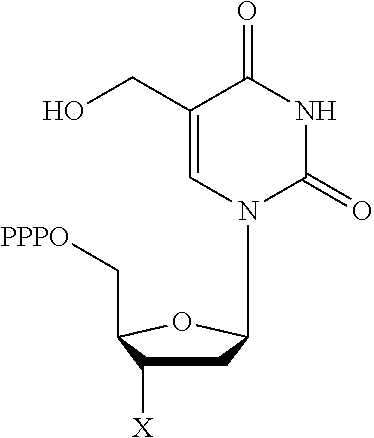

D00000

D00001
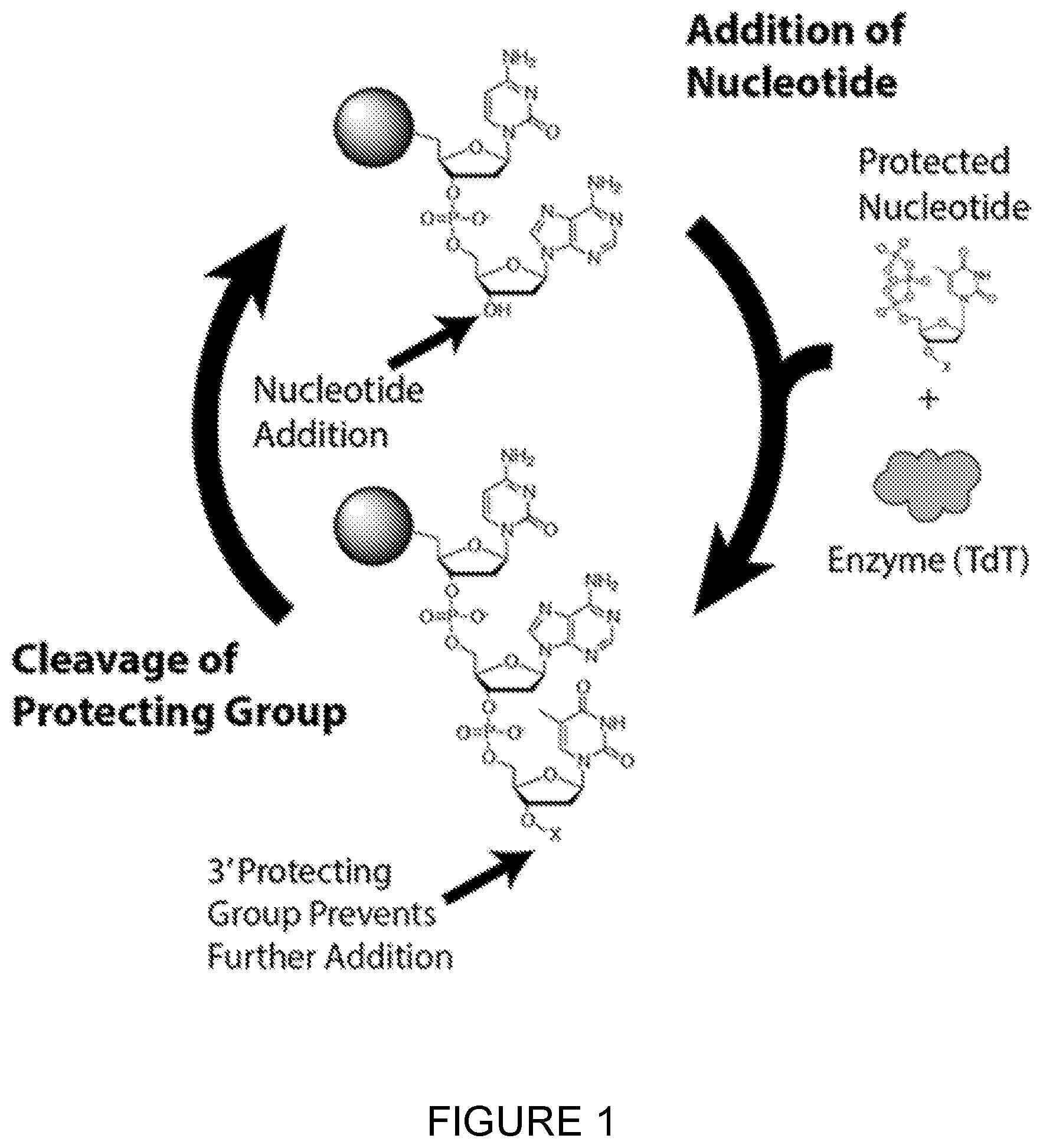
D00002
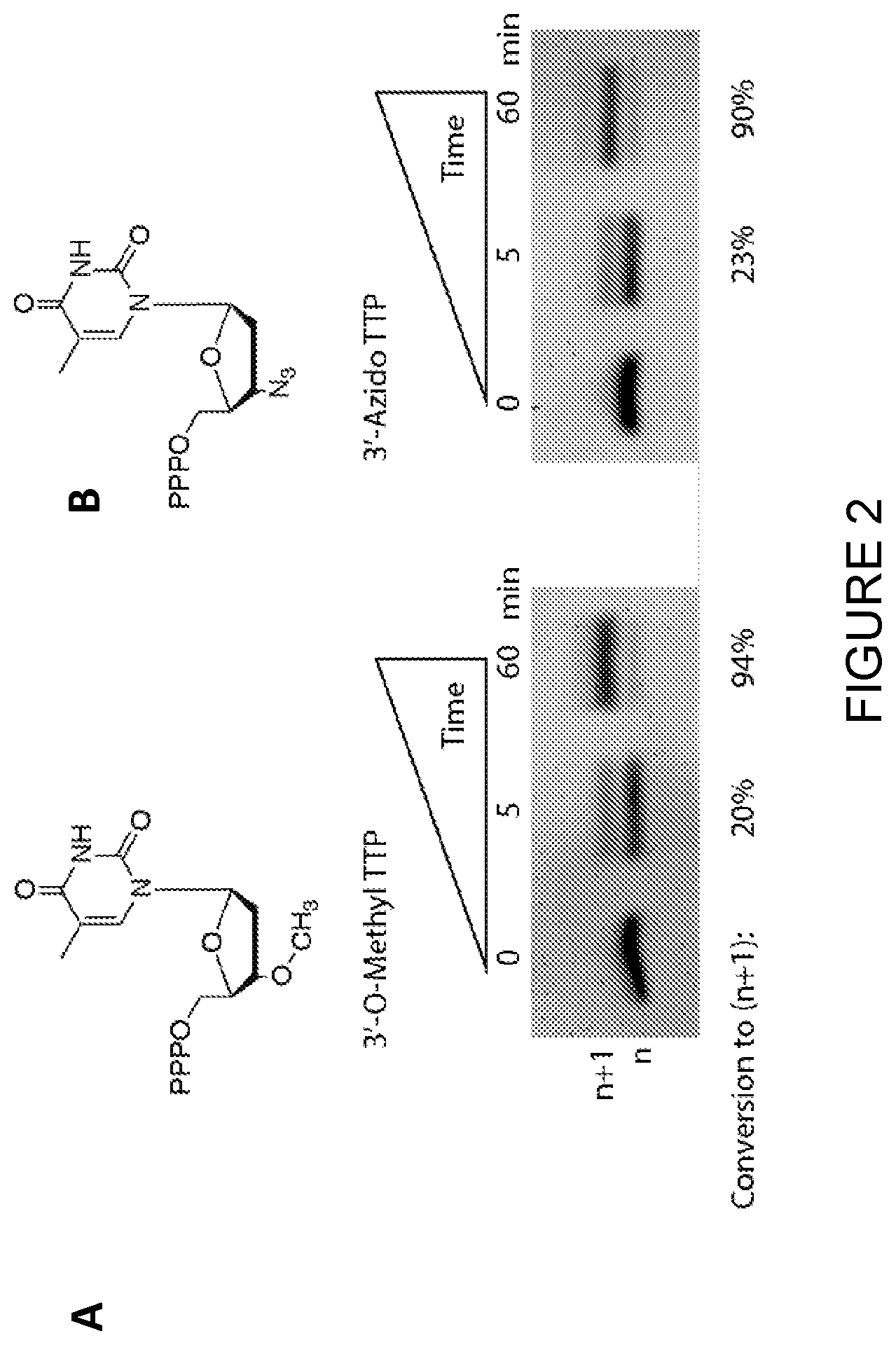
D00003

D00004
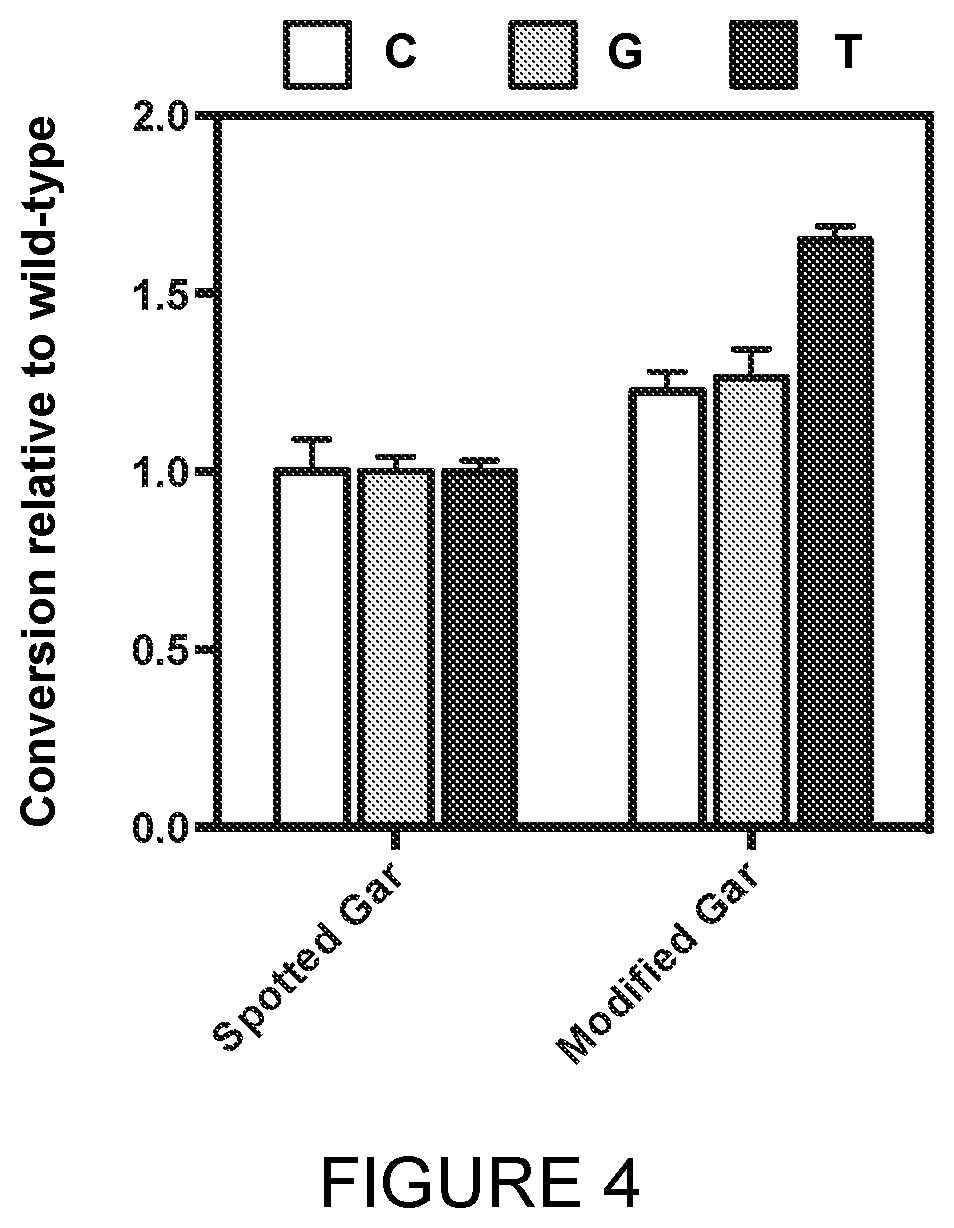
D00005
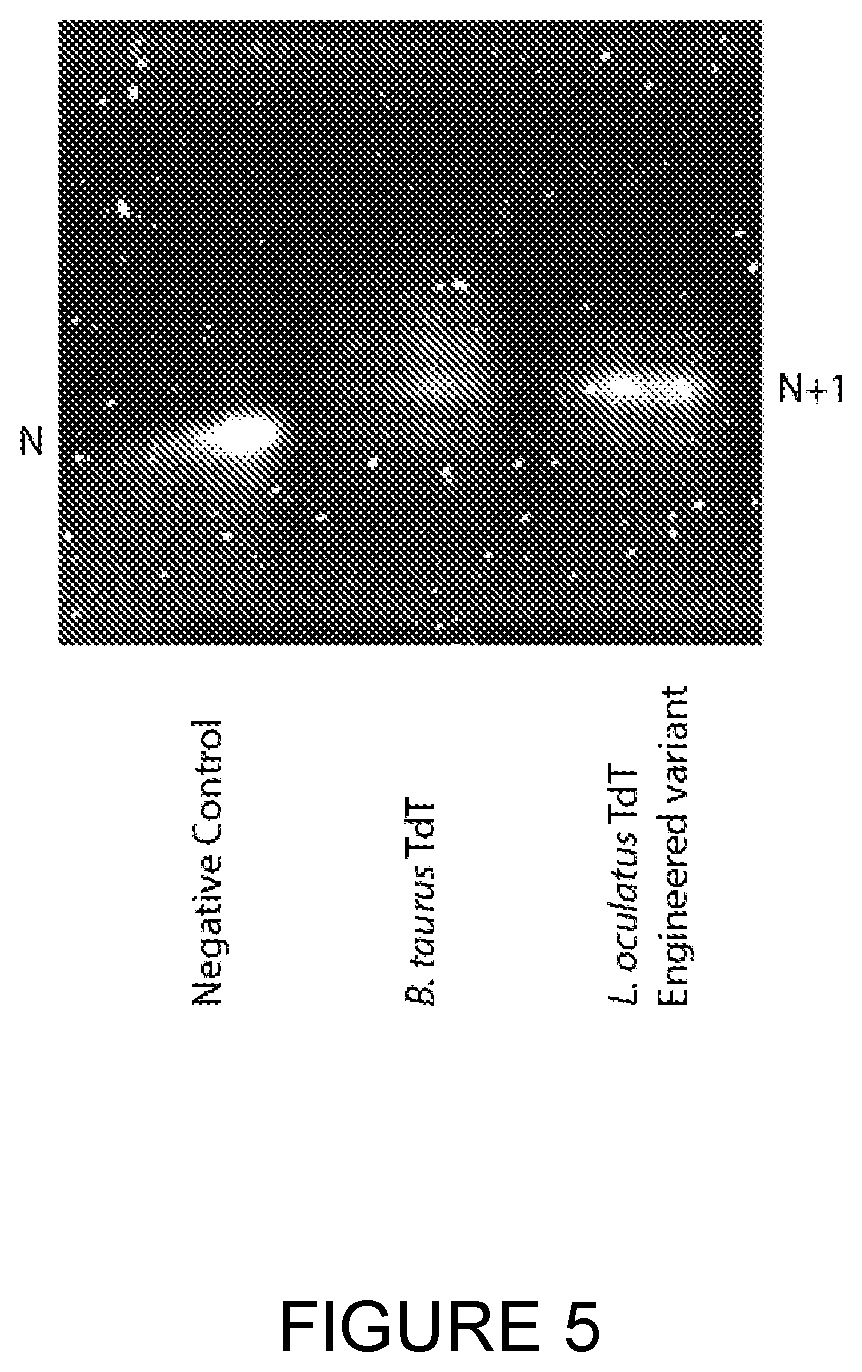
D00006
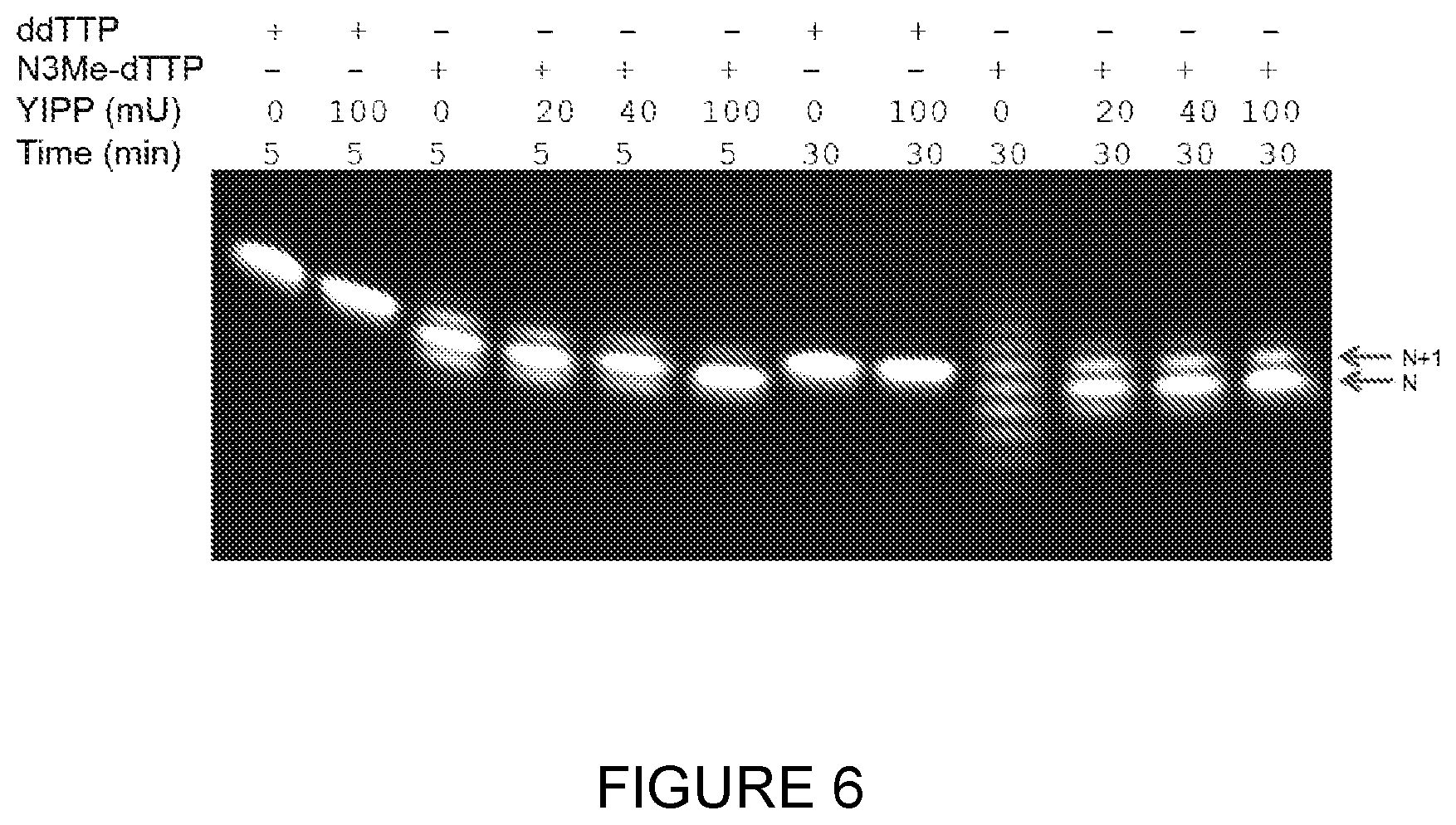
D00007
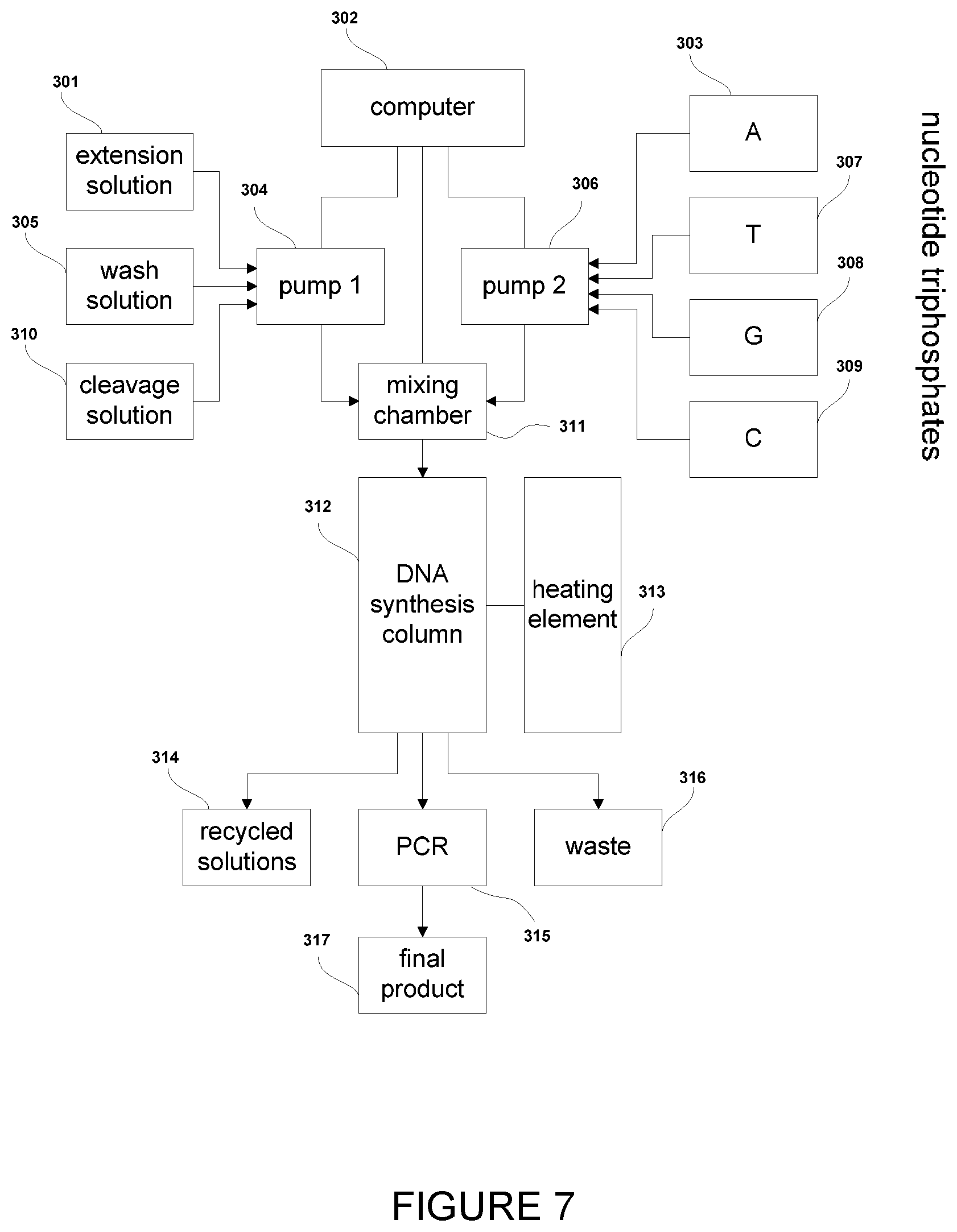
S00001
XML
uspto.report is an independent third-party trademark research tool that is not affiliated, endorsed, or sponsored by the United States Patent and Trademark Office (USPTO) or any other governmental organization. The information provided by uspto.report is based on publicly available data at the time of writing and is intended for informational purposes only.
While we strive to provide accurate and up-to-date information, we do not guarantee the accuracy, completeness, reliability, or suitability of the information displayed on this site. The use of this site is at your own risk. Any reliance you place on such information is therefore strictly at your own risk.
All official trademark data, including owner information, should be verified by visiting the official USPTO website at www.uspto.gov. This site is not intended to replace professional legal advice and should not be used as a substitute for consulting with a legal professional who is knowledgeable about trademark law.